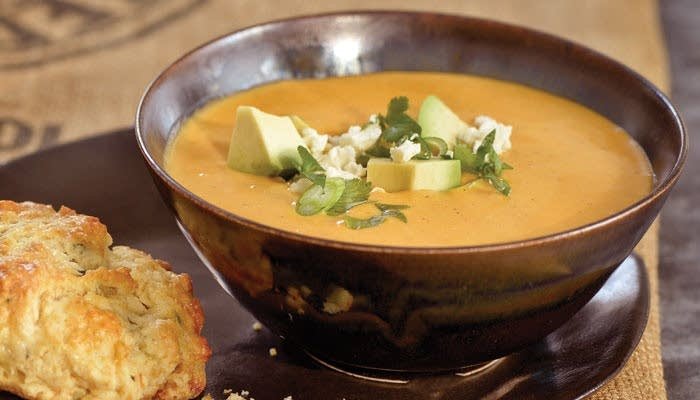Take Me to the Recipes
Forget stereotypical tacos and burritos – Ecuador’s culinary scene explodes with unexpected delights, deeply rooted in the nation’s captivating history, diverse geography, and vibrant climate.
Imagine fiery stews simmering in the crisp Andean air, fresh seafood plucked straight from the turquoise Pacific, and exotic fruits bursting with flavor in the Amazonian heat. Each bite tells a story, transporting you through time and across landscapes, offering a glimpse into the rich tapestry of Ecuadorian culture.
But what truly defines this captivating cuisine? Buckle up, food adventurers, as we embark on a delicious journey to explore the soul of Ecuadorian food.
We’ll delve into the historical influences that shaped iconic dishes like “locro de papa” and “encebollado,” discover how the Andes cradle hearty stews while the coast offers up a bounty of seafood and understand how the unique climate dictates the seasonal symphony of flavors that graces Ecuadorian tables.
So, ditch the guidebooks and prepare to be surprised. From the melt-in-your-mouth “llapingachos” to the adventurous “cuy,” Ecuador’s cuisine promises a delightful adventure for every palate. Let’s raise a glass (of local “chicha”?
Take Me to the Recipes
Key Takeaways
- Ecuador cuisine offers a diverse range of traditional dishes, specialties, and authentic recipes.
- Ecuadorian food culture plays a significant role in Ecuadorian society.
- Top Ecuadorian culinary delights include empanadas, encebollado, and ceviche.
- Ecuador is home to a variety of exotic fruits that add a burst of flavor to its cuisine.
- To savor the best of Ecuadorian cuisine, we encourage you to explore its flavors and embrace its culinary culture.
Where is Ecuador?
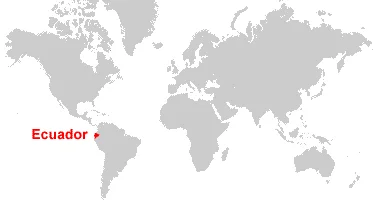
Ecuador is located in the western corner at the top of the South American continent. Ecuador is named after the Equator. Most of the country is in the Southern Hemisphere.

Index to the Article
- Take Me to the Recipes
- More Articles
- 10 Interesting Facts about Ecuador
- Ecuador’s History and the Effect it has had on the Cuisine
- How Ecuador’s Climate and Geography has Influenced its Cuisine
- Understanding the Essence of Ecuador’s Cuisine
- Ecuador’s Culinary Traditions
- Exploring Ecuador’s Ingredients: The Flavors of Ecuador’s Cuisine
- Traditional Examples of Ecuadorian Food
- Exploring Ecuadorian Street Food
- The Most Popular Ecuadorian Recipes
- What are the Health Implications of Ecuador’s Cuisine?
- Ecuadorian Cuisine Recipes to Try at Home
- Conclusion
- FAQ’s
You may also be interested in the Following Articles
- North and South American Cuisine – A Culinary Expedition
- Europe Cuisine: Savor the Continent’s Best Culinary Secrets!
- African Cuisine: Discover the Bold Flavors & Global Charm!
- Asian Cuisine Unlock its Secrets – Taste, Health & Global Influence!
Savor iconic Ecuadorian Food Recipes – Click on each tantalizing picture to open up the Recipe.
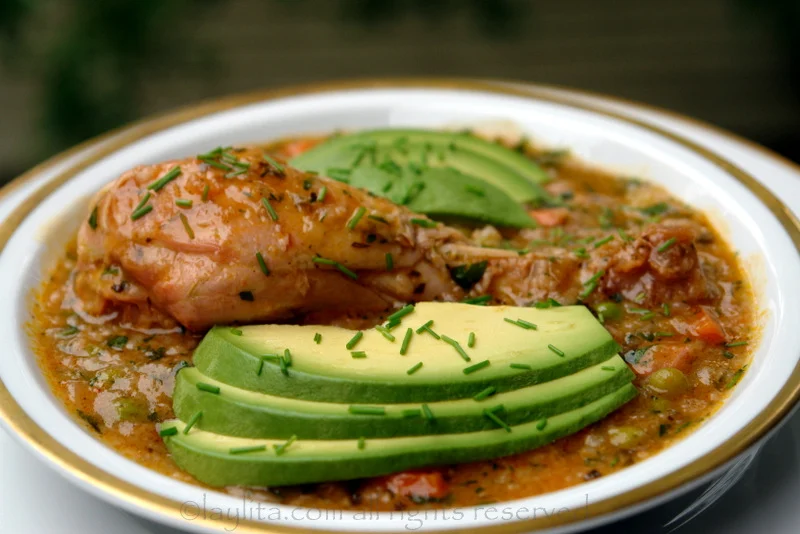
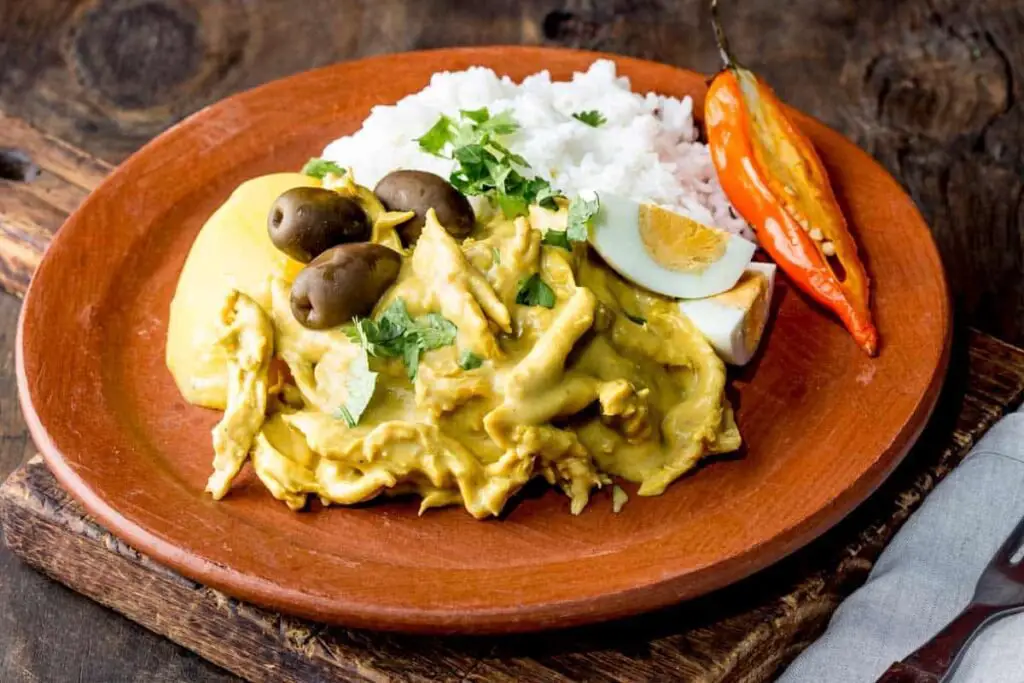
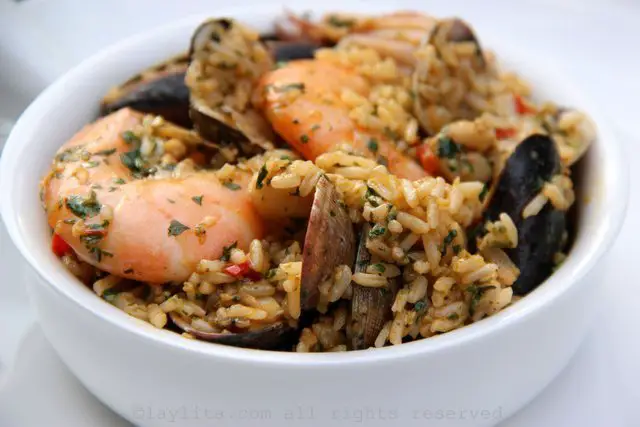
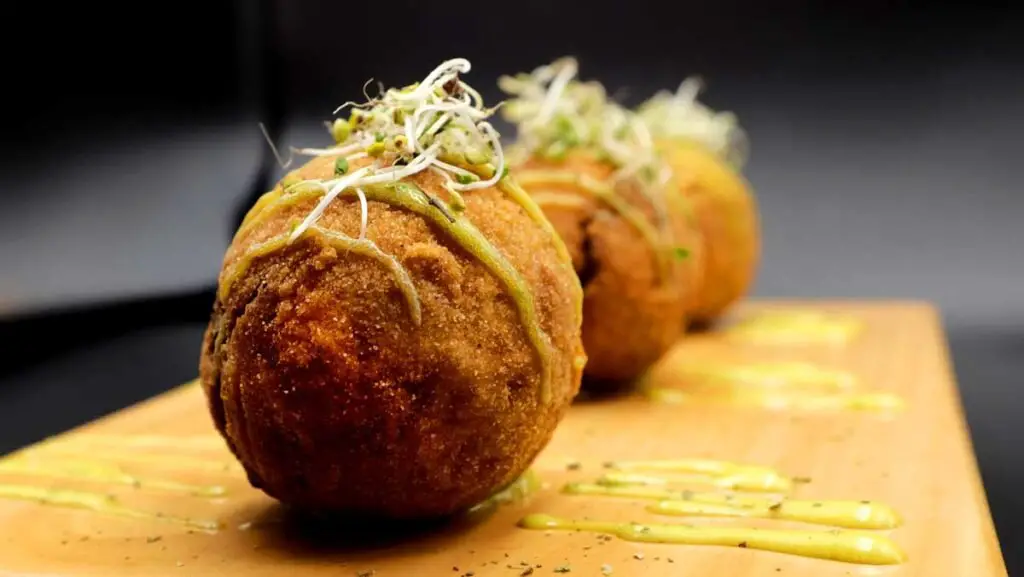
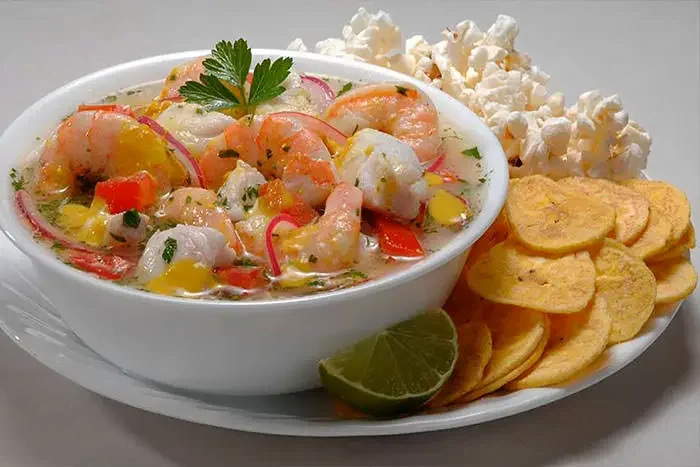
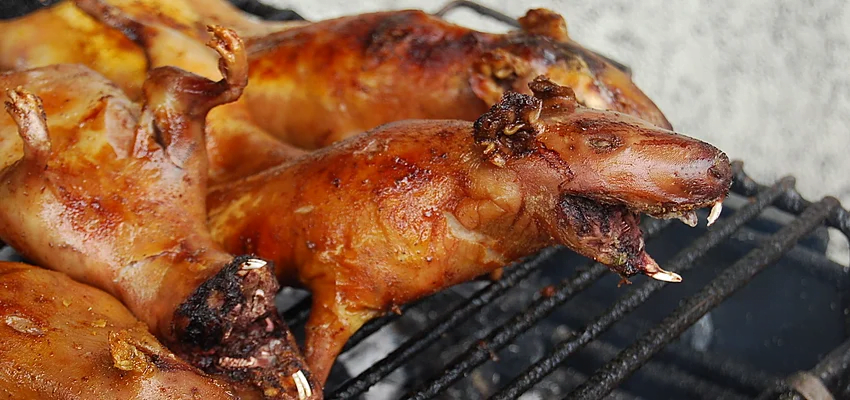
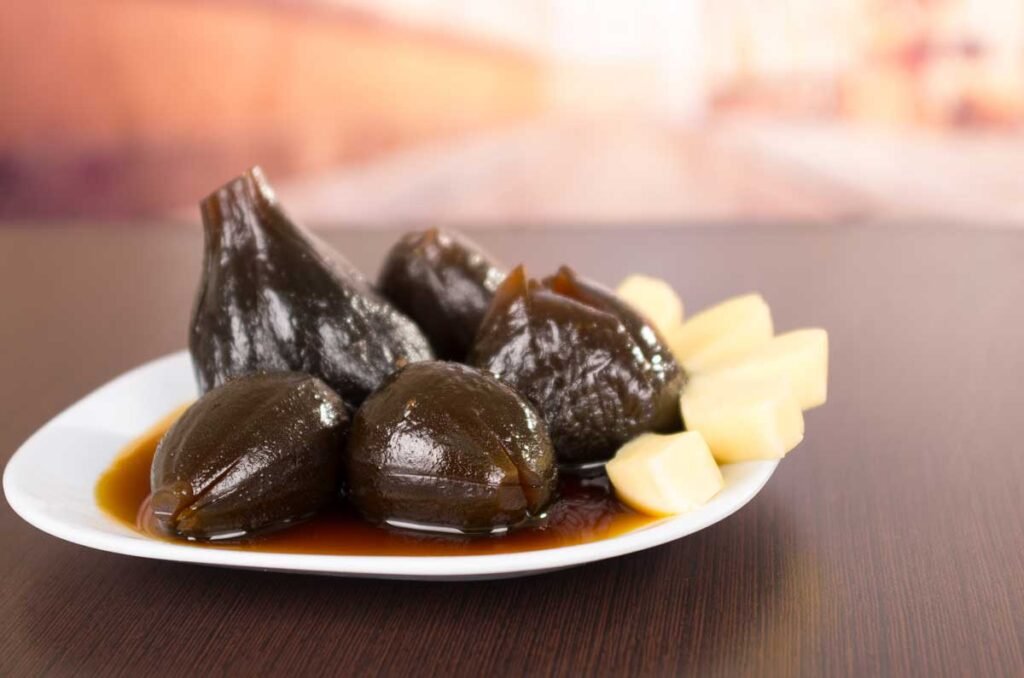
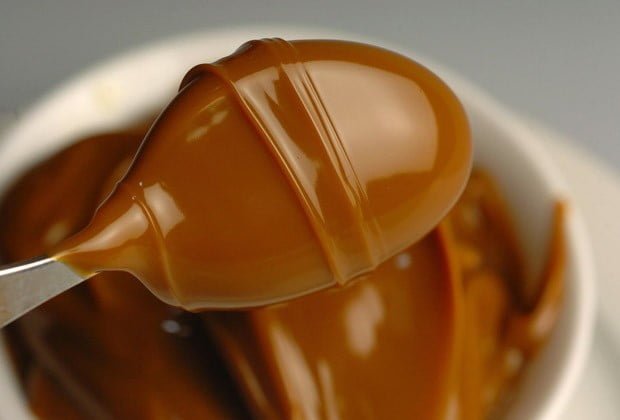
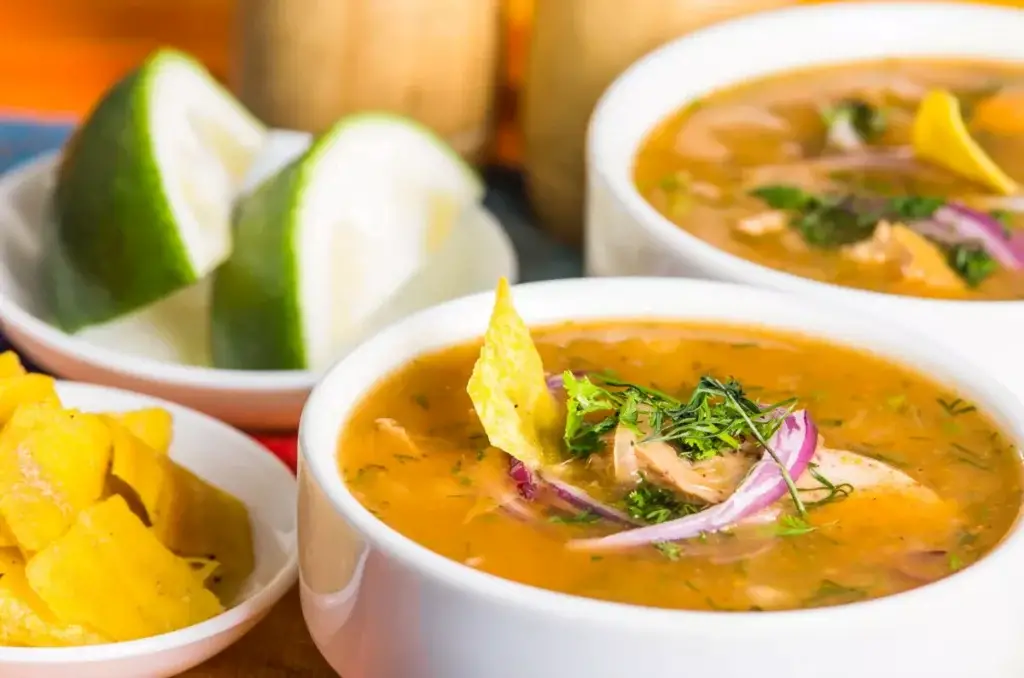
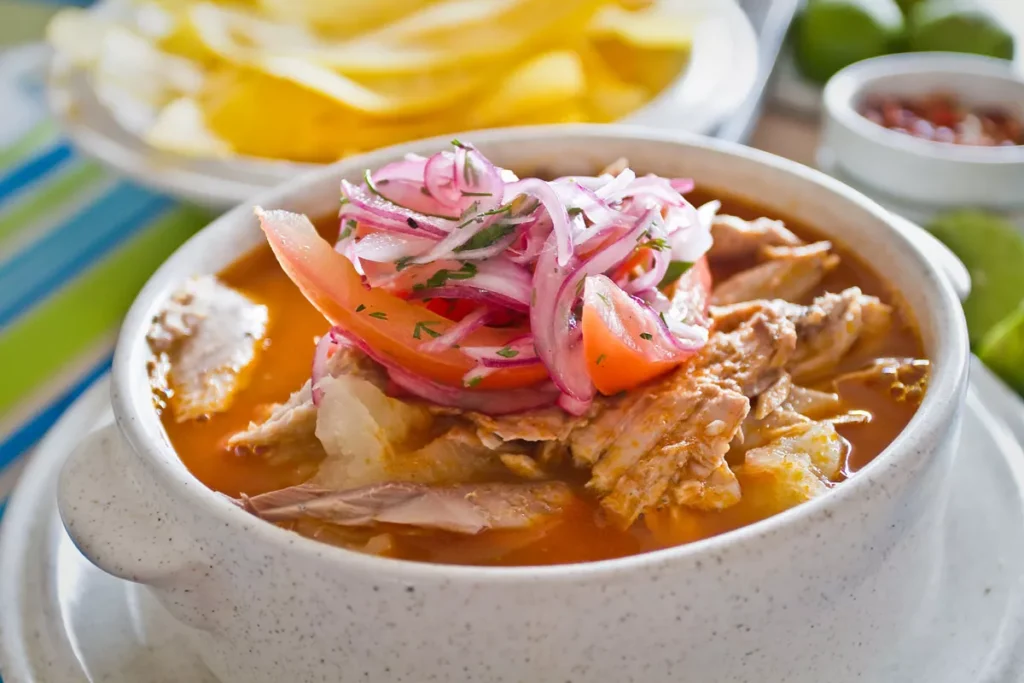
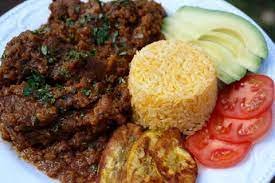

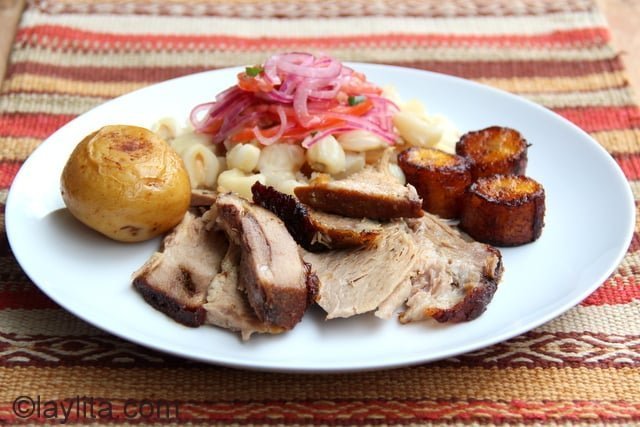
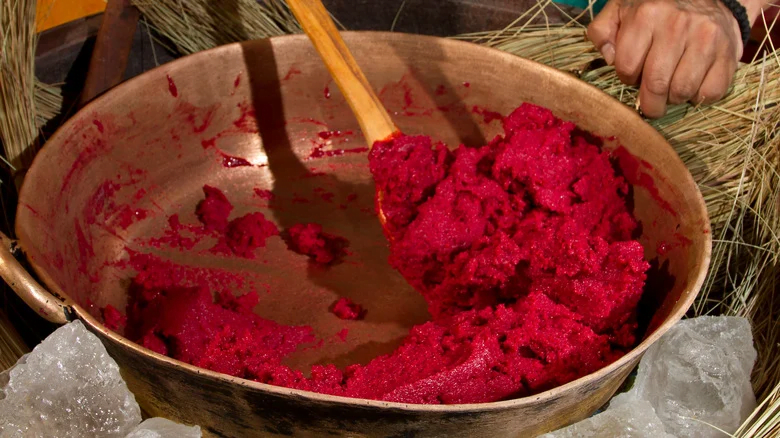
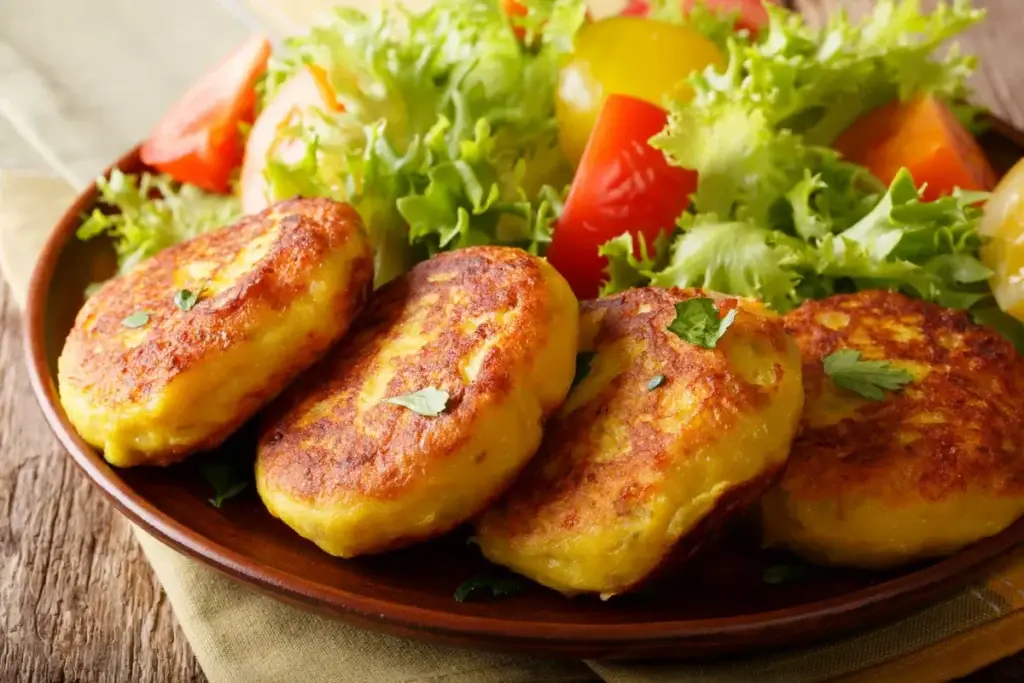
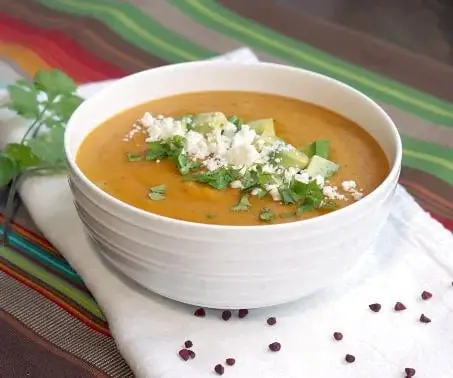
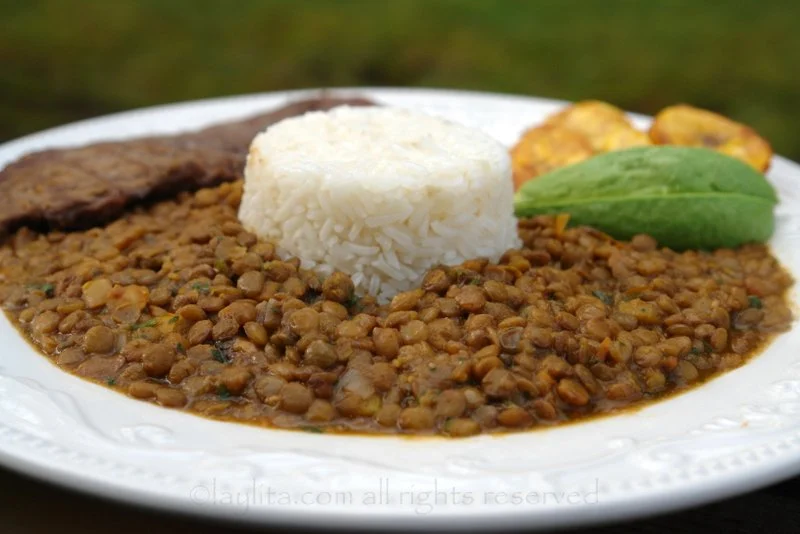
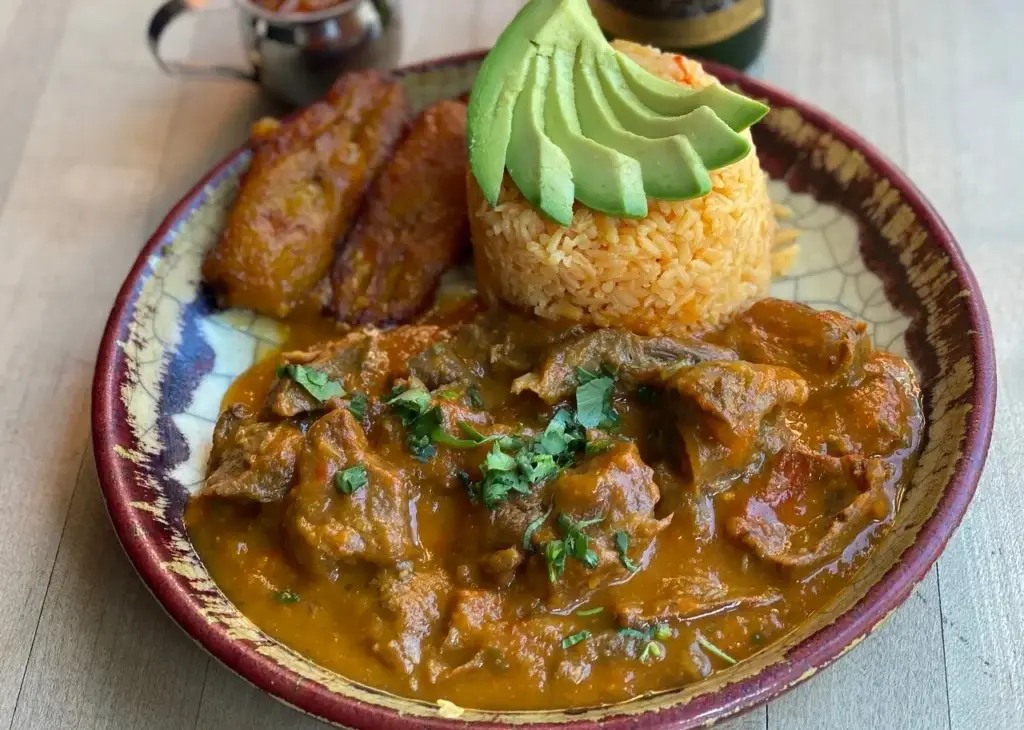
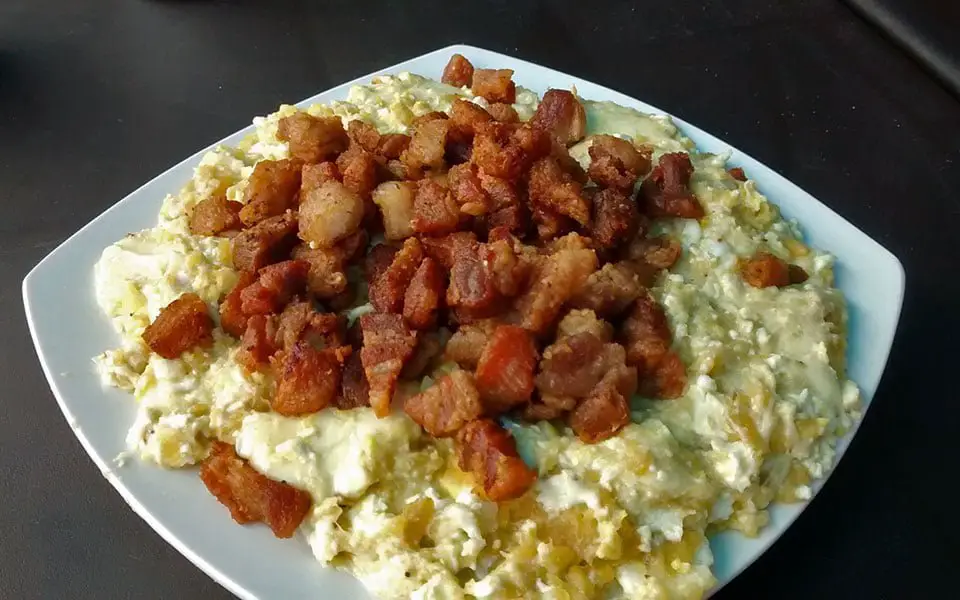
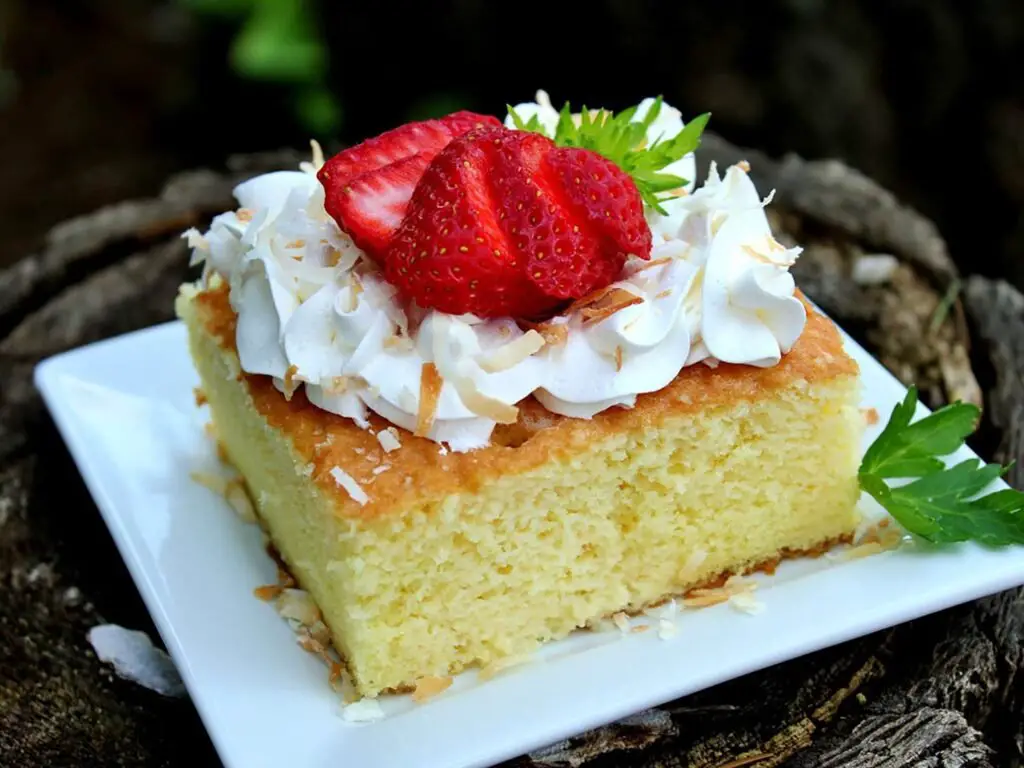
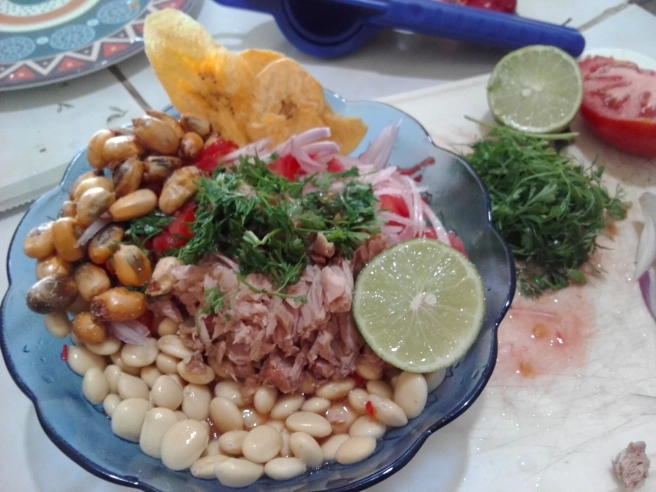
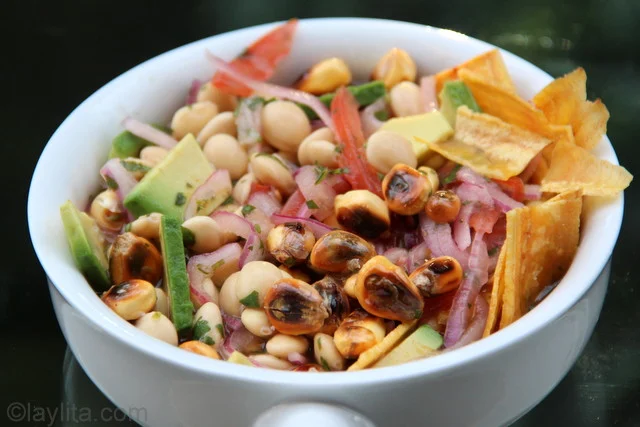
10 Interesting Facts about Ecuador
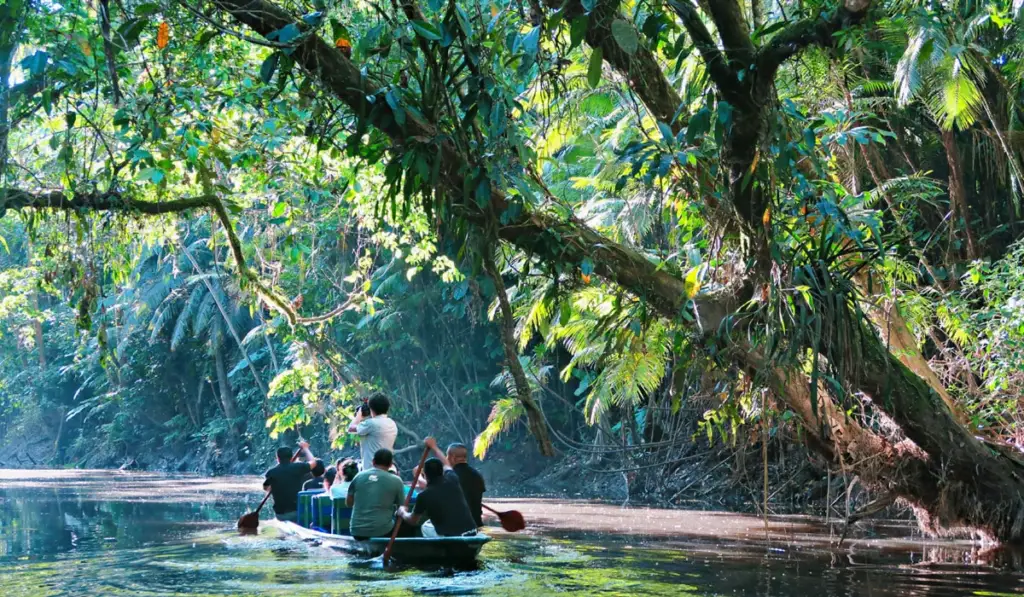
Ecuador might conjure images of the Amazon rainforest and the iconic Galapagos Islands, but this Andean nation holds more surprises than just wildlife wonders.
Get ready to have your mind blown (or maybe just slightly grossed out) with these 10 interesting, strange, funny, and even disturbing facts about Ecuador:
Shrunken Heads Are Still Made (Kinda)
While the gruesome practice of shrinking human heads (tsantsas) is mostly a thing of the past, some indigenous communities still possess these macabre relics. Today, tourists can find ethically sourced replicas crafted from cowhide, a less disturbing nod to this unique cultural tradition.
Guinea Pigs are Gourmet
Don’t clutch your pearls! In Ecuador, “cuy” (guinea pig) is a cherished delicacy, roasted or stewed for special occasions. While it might seem strange, consider this: they were domesticated 5,000 years ago and hold significant cultural importance.
The Devil’s Nose Train is a Thrill Ride

This UNESCO World Heritage railway snakes through the Andes, boasting the steepest non-assisted ascent in the world. Passengers hold their breath as the train inches up a zigzagging track, offering heart-stopping views and bragging rights.
Quito is Higher Than You Think
At a dizzying 2,850 meters above sea level, Quito holds the title of the second-highest capital city in the world (after La Paz, Bolivia). Be prepared for slightly thinner air and the occasional altitude headache!
They Have Their Own Time Zone
Buckle up, time travelers! Ecuador has its own time zone, GMT-5, which doesn’t change for daylight saving time. So, while the rest of the world springs forward and falls back, Ecuador just chills in its own temporal bubble.
Banana is King (Literally)

Ecuador is the world’s largest exporter of bananas, with these yellow beauties accounting for a whopping 7% of their total exports. So, next time you peel a banana, remember, it might have originated in the land of the equator!
They Worship a Virgin on a Volcano
The Basilica del Quito, perched atop an active volcano, is Ecuador’s most recognizable landmark. Legend says the Virgin Mary saved the city from an eruption, earning her the nickname “La Virgen de Quito” and a place of deep devotion.
Hot Springs, Anyone?

Ecuador sits on the “Ring of Fire,” so naturally, it boasts numerous geothermal wonders. Take a dip in the relaxing hot springs of Baños, a town aptly named “Baths” in English, and let your worries melt away.
They Have a Chocolate River (Sort Of)
Okay, it’s not Willy Wonka-level chocolate flowing freely, but the Napo River does carry brown-tinged water thanks to dissolved minerals. Still, it’s a sight to behold and a reminder of Ecuador’s diverse natural wonders.
You Can Shrink Yourself (Virtually)
The “Ingapirca Project” uses augmented reality to recreate the ancient Cañari civilization. Walk through a virtual village, interact with holograms, and shrink yourself down to explore like a tiny explorer. Now that’s some next-level travel experience!
Bonus Fact

Ecuador uses the US dollar as its official currency, making budgeting for your trip a breeze.
So, there you have it – 10 fascinating (and maybe a little strange) facts to pique your curiosity about Ecuador. This unique country promises diverse landscapes, rich history, and experiences that will stay with you long after your visit. Just remember, pack your hiking boots, your adventurous spirit, and maybe a strong stomach for cuy, and Ecuador will welcome you with open arms (and maybe a plate of roasted guinea pig).
Ecuador’s History and the Effect it has had on the Cuisine

Imagine a plate filled with vibrant flavors, reflecting centuries of tradition and cultural exchange. That’s what you get when you explore the delicious world of Ecuadorian cuisine. Its story is a tapestry woven from ancient indigenous techniques, Spanish colonial influences, and modern global trends, offering a unique culinary experience in every bite.
Step Back in Time
Let’s embark on a historical adventure, tracing the key periods that shaped Ecuador’s culinary landscape:
Pre-Columbian Era (Before the 16th Century)
Imagine indigenous communities nurturing the land, cultivating potatoes, corn, cassava, and other staples that still form the foundation of Ecuadorian meals today. These vibrant ingredients laid the groundwork for a cuisine deeply rooted in the land.
Spanish Colonial Period (16th Century Onwards)
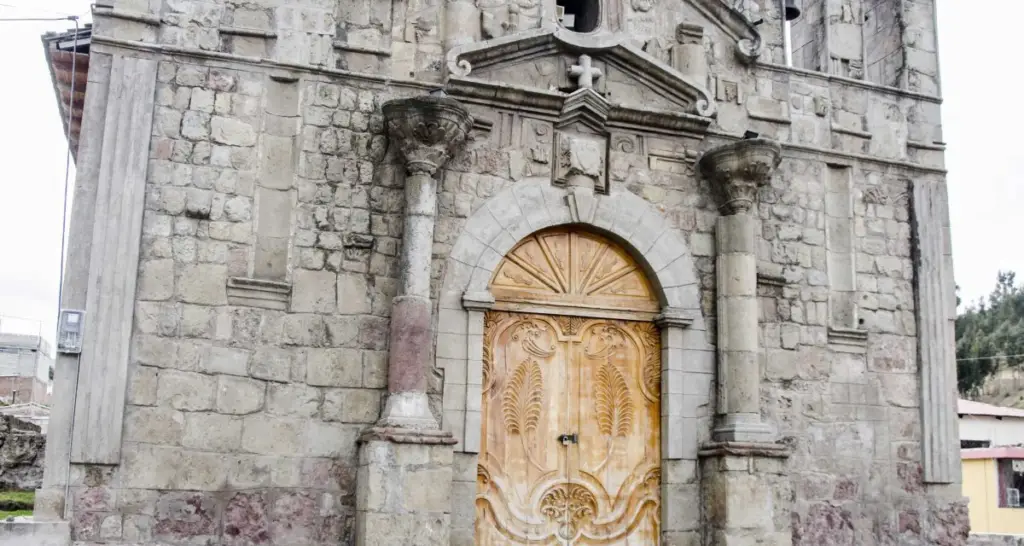
The arrival of the Spanish brought new flavors and techniques. Wheat, rice, and livestock enriched the culinary canvas, while Spanish cooking methods and spices like cumin and paprika added a fresh perspective.
This fusion birthed iconic dishes like “secos” (stews) and “empanadas,” highlighting the beautiful blend of cultures.
Independence and Gran Colombia (Early 19th Century)
As the fight for independence unfolded, cultural exchanges flourished. Gran Colombia, encompassing Ecuador, led to interactions with neighboring countries, introducing plantains, yuca, and tropical fruits that now grace plates across the nation.
Liberal Revolution and Concha Revolution (Late 19th and Early 20th Centuries)
Political shifts impacted food availability. The Liberal movement prioritized agriculture, leading to increased cultivation of core ingredients like corn, potatoes, and beans, ensuring these staples remained accessible to all.
Ecuadorian-Peruvian Wars (Late 19th and Early 20th Centuries)

While tensions existed, they also sparked interesting culinary interactions. Seafood from the coast and “cuy” (guinea pig) from the Andes became emblematic of Ecuadorian cuisine, showcasing the unique flavors of each region.
Modern Era and Cultural Diversity (20th Century to Present)
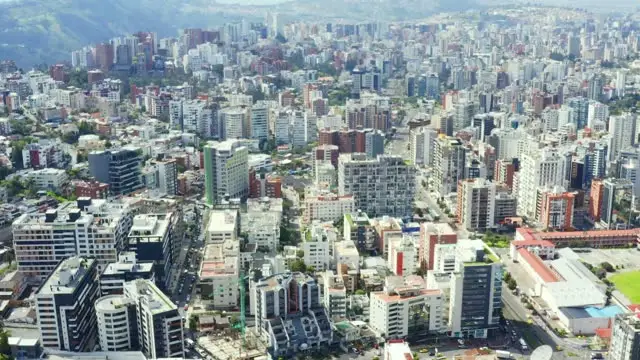
Migration and globalization introduced a symphony of flavors from distant lands. Italian pastas, Lebanese pita bread, African spices, and Chinese stir-fries now share space on Ecuadorian tables, reflecting the country’s diverse heritage.
Dishes like “ceviche” (marinated seafood), “llapingachos” (potato pancakes), and “seco de chivo” (stewed goat) exemplify this delicious amalgamation.
A Foodie’s Paradise Awaits
From the Andean highlands with their hearty stews to the coastal regions brimming with fresh seafood, each corner of Ecuador offers unique culinary delights. So, ditch the guidebooks and embark on your own delicious adventure.
Immerse yourself in the vibrant markets, chat with friendly locals, and savor the rich tapestry of flavors that tell the story of Ecuador. Buen provecho!
References
How Ecuador’s Climate and Geography has Influenced its Cuisine

Ecuador has four main regions: the Amazon jungle, the Andean highlands, the Pacific coast, and the Galapagos Islands. Each region has its own distinctive ingredients, dishes, and flavors.
Natural resources, weather, and cultural influences of the area influence these.
The Amazon jungle covers about half of Ecuador’s territory. It is home to many indigenous groups that have their own culinary traditions.
The main staple of the Amazonian cuisine is yuca. Another name is cassava, a starchy root. Chefs can boil, fry, or use it to make bread, pancakes, and soups.
The Amazonian cuisine also features a variety of fruits, such as bananas, tree-grapes, and peach-palms. It also makes use of fish, game, and insects. Some of the typical dishes of the Amazonian cuisine are
- Maito, which is fish or meat wrapped in banana leaves and grilled over a fire.
- Chontacuro, large grubs that chefs roast or fry and serve with yuca or plantain.
The Andean Highlands
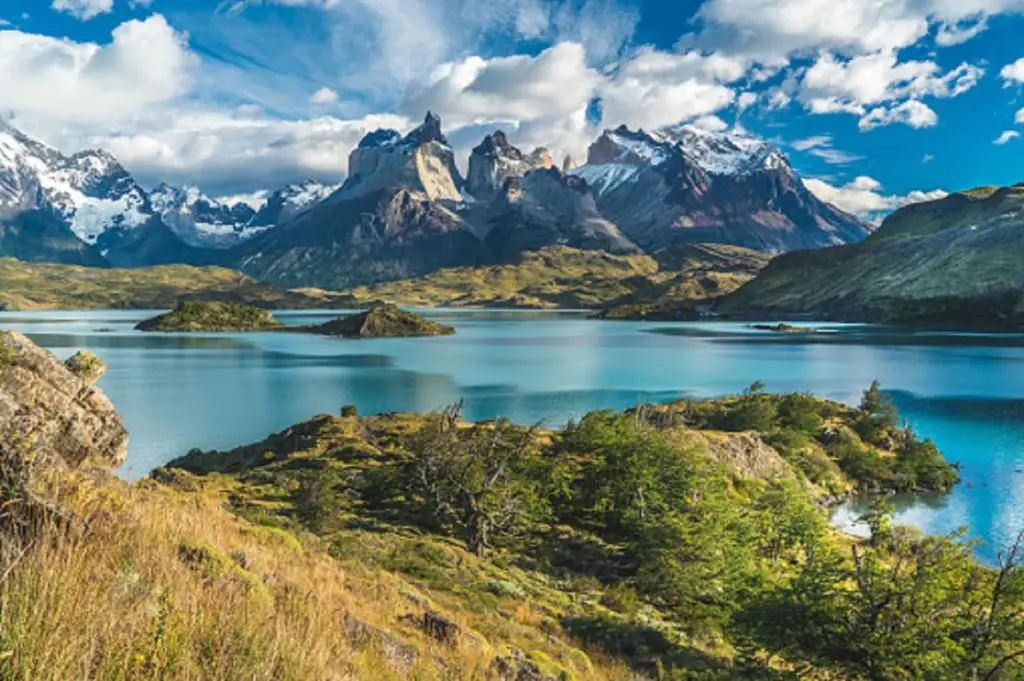
The Andean highlands are the most populated and diverse region of Ecuador. Spanish, African, and indigenous cultures influence it. The recipes use potatoes, corn, quinoa, beans, and cheese, as well as meat, such as pork, chicken, beef, and cuy (guinea pig).
Some of the traditional dishes of the Andean cuisine are locro. This is a hearty potato soup with cheese and avocado, llapingachos. Chefs fry potato patties and stuff them with cheese, and hornado, with which they roast pork served with potatoes and corn.
The Pacific Coast
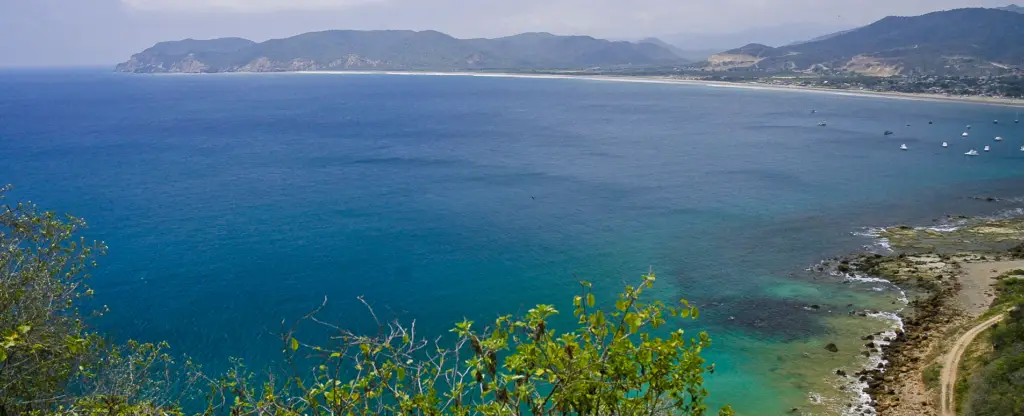
The Pacific coast is the region with the most seafood and rice dishes, as well as the most African influence. The coastal cuisine is ceviche. This is a raw seafood that chefs marinate in citrus juice and spices, and encocado, which is fish or seafood cooked in a coconut sauce.
The coastal cuisine also uses plantains, lentils, pasta, and peanuts, as well as tropical fruits, such as passionfruit, naranjilla, and tree tomato. Some of the popular dishes of the coastal cuisine are bolon de verde, which are balls of mashed green plantains with cheese or pork, and encebollado, which is a fish soup with yuca, onion, and tomato.
The Galapagos Islands
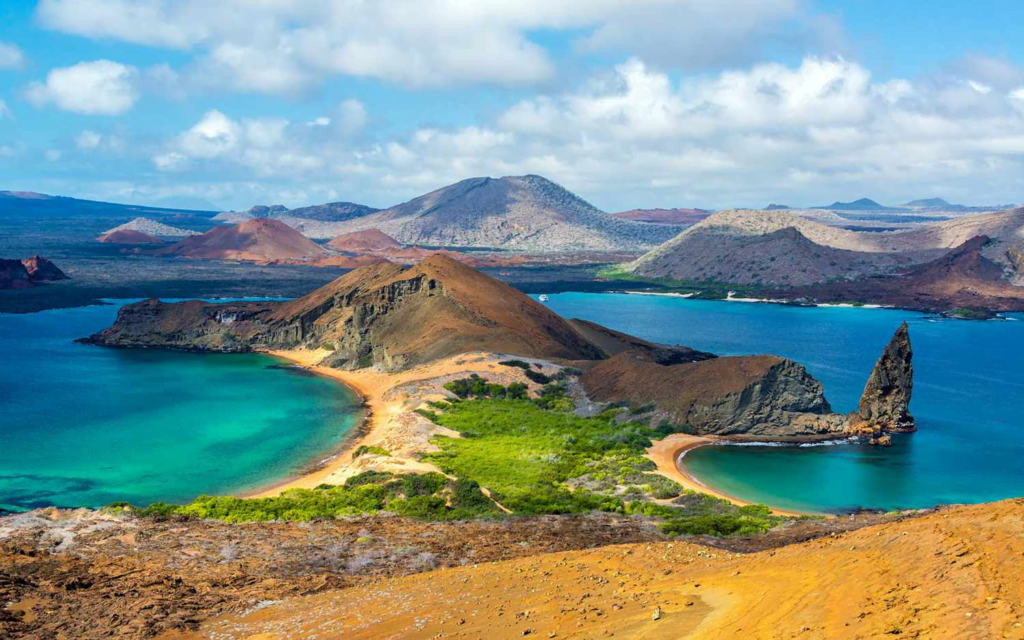
The Galapagos Islands are a unique and isolated archipelago that belongs to Ecuador, where the cuisine is influenced by the local wildlife and the international visitors. It is based on seafood, such as lobster, crab, tuna, and wahoo, as well as fruits and vegetables, such as tomatoes, cucumbers, and oranges.
Some of the dishes of the Galapagos cuisine are lobster ceviche, crab soup, and grilled tuna with salsa.
Ecuador’s cuisine is a reflection of its climate and geography, as well as its history and culture. By trying the different dishes of each region, one can appreciate the diversity and richness of Ecuador’s gastronomy.
Understanding the Essence of Ecuador’s Cuisine
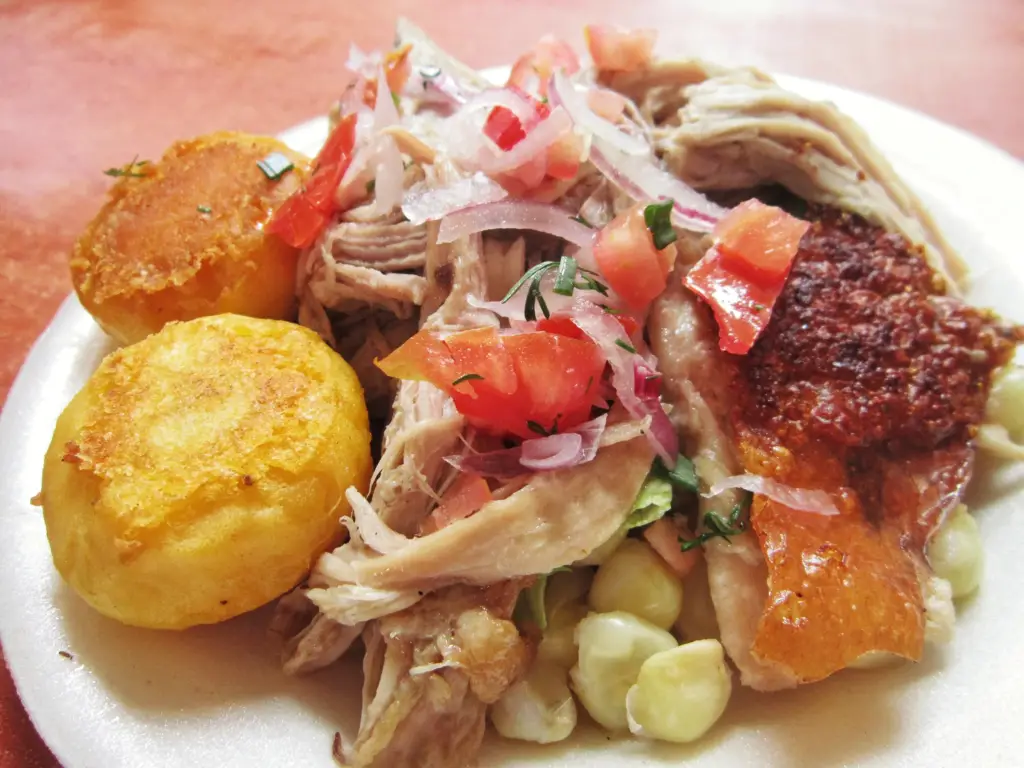
Ecuador’s cuisine is more than just a collection of dishes and recipes. It is a way of expressing the identity, culture, and history of a nation.
The nation is the result of its diverse and complex geography and climate. Ecuador’s cuisine is a fusion of influences from the indigenous, Spanish, African, and other immigrant groups.
They have contributed to the country’s gastronomic heritage. Ecuador’s cuisine is also a reflection of the natural resources, agricultural practices, and environmental challenges that have defined the food production and consumption patterns of each region.
Ecuador’s cuisine is, therefore, a window into the essence of Ecuador as a country and as a people.
There are Four Main Regions
To understand the essence of Ecuador’s cuisine, one must explore the four main regions that make up the country: the Amazon jungle, the Andean highlands, the Pacific coast, and the Galapagos Islands.
Each region has its own distinctive ingredients, dishes, and flavors. The natural resources, weather, and culture influence the ingredients.
Amazon Jungle
For example, the Amazon jungle is home to many indigenous groups that have their own culinary traditions based on yuca, fruits, fish, game, and insects.
Andean highlands
The Andean highlands have the biggest population. It is the most diverse region of Ecuador, where the cuisine is influenced by the Spanish, African, and indigenous cultures and features potatoes, corn, quinoa, beans, cheese, and meat.
The Pacific coast
The Pacific coast is the region with the most seafood and rice dishes. It has the most African influence, and is known for its ceviche, encocado, plantains, lentils, pis alasta, and peanuts.
The Galapagos Islands
The Galapagos Islands are a unique and isolated archipelago that belongs to Ecuador, where the cuisine is influenced by the local wildlife and the international visitors and is based on seafood, fruits, and vegetables.
By trying the different dishes of each region, one can appreciate the diversity and richness of Ecuador’s cuisine and how it represents the essence of Ecuador’s identity, culture, and history.
Ecuador’s cuisine is not only a source of nourishment, but also a source of pride, creativity, and joy for the Ecuadorian people.
Ecuador’s Culinary Traditions
The country’s culinary traditions are a result of the fusion of different cultures, influences, and ingredients that have shaped the country’s gastronomy over time. Ecuador’s cuisine is not homogeneous, but rather varies according to the region, climate, and availability of resources.
However, there are some common elements that define Ecuador’s culinary identity, such as the use of corn, potatoes, yuca, plantains, rice, beans, cheese, and seafood, as well as the incorporation of spices, herbs, and sauces.
Ecuador’s Soups
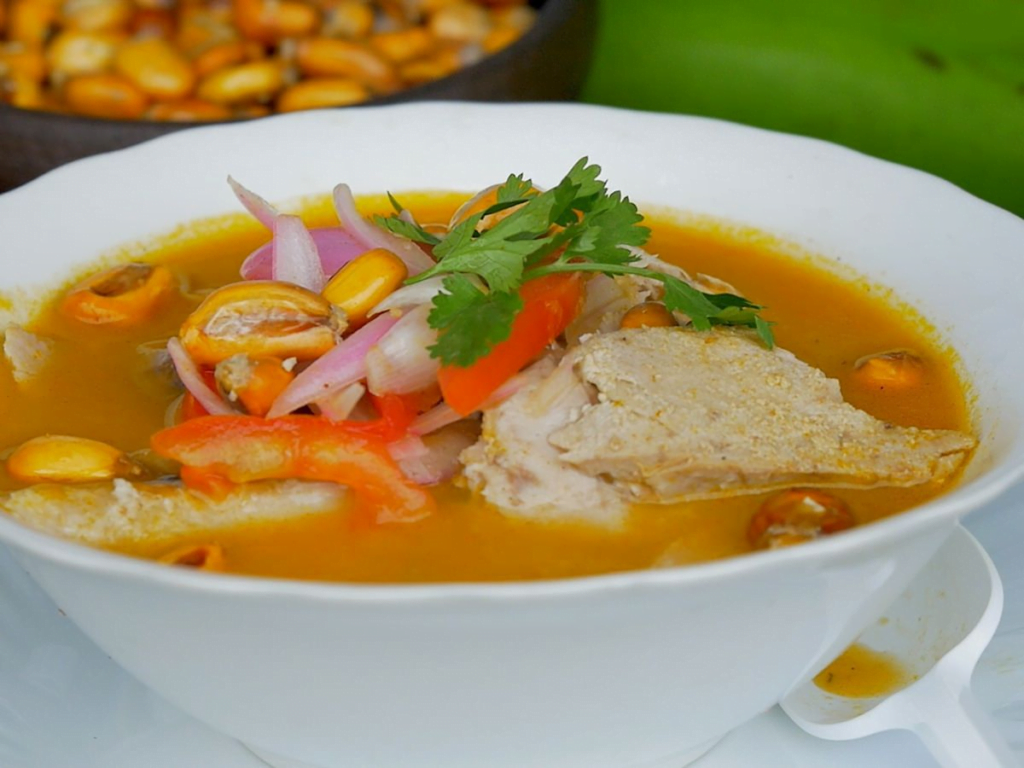
One of the most distinctive aspects of Ecuador’s culinary traditions is the diversity of soups, which are considered a staple and a symbol of hospitality. Ecuador has hundreds of types of soups, ranging from light and refreshing to thick and hearty, and from savory to sweet.
Some of the most famous soups are locro, a potato soup with cheese and avocado, fanesca, a lentil soup with 12 types of grains and fish, and quinoa soup, a nutritious soup with quinoa, vegetables, and cheese.
Other Countries Influence
Another important feature of Ecuador’s culinary traditions is the influence of the indigenous, Spanish, African, and other immigrant groups that have contributed to the country’s gastronomy. The indigenous influence is evident in the use of native ingredients, such as quinoa, amaranth, chia, and cacao.
It also shows up in the preparation of dishes, such as maito, which is fish or meat wrapped in banana leaves and grilled, and ayampaco, which is fish or meat cooked in clay pots.
- The Spanish influence is noticeable in the use of wheat, cheese, pork, and chicken, as well as in the introduction of dishes, such as empanadas, which are pastries filled with meat, cheese, or vegetables, and tortilla de patata, which is a potato omelet.
- The African influence is prominent in the coastal region, where the cuisine features coconut, plantain, peanut, and seafood, as well as dishes, such as encocado, which is fish or seafood cooked in a coconut sauce, and seco de chivo, which is goat stew.
- The other immigrant groups, such as the Italians, Germans, Lebanese, and Chinese, have also added their flavors and dishes to Ecuador’s cuisine, such as pizza, sausages, shawarma, and chifa, which is a fusion of Chinese and Ecuadorian food.
Ecuador’s culinary traditions are a reflection of the country’s diversity, history, and culture. They are also a source of pride, creativity, and joy for the Ecuadorian people, who enjoy sharing their food with their family, friends, and visitors. Ecuador’s cuisine is not only delicious, but also nutritious, colorful, and varied, offering a taste of the country’s essence.
Exploring Ecuador’s Ingredients: The Flavors of Ecuador’s Cuisine
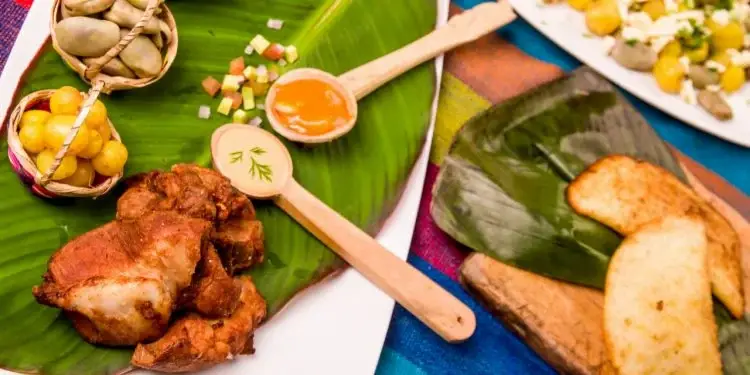
Ecuador’s cuisine is a feast for the senses, offering a variety of flavors, aromas, textures, and colors that reflect the country’s diversity and richness. Ecuador’s cuisine is based on the use of fresh and natural ingredients, many of which are native to the country and have been cultivated for centuries by the indigenous people. Some of the most common and distinctive ingredients of Ecuador’s cuisine are:
Corn
Corn is one of the most important crops in Ecuador and is used in many dishes and preparations, such as tortillas, tamales, humitas, mote, choclo, and chicha. It is also used to make flour, starch, and oil, as well as snacks, such as cancha, which are roasted corn kernels, and tostado, which are fried corn kernels.
Potatoes
Potatoes are another staple of Ecuador’s cuisine and are grown in different varieties, shapes, sizes, and colors. They are used to make soups, such as locro and fanesca, stews, such as carapulcra and seco de pollo, and patties, such as llapingachos and yapingachos.
Potatoes are also eaten boiled, baked, mashed, or fried, and are often accompanied by sauces, such as aji, which is a spicy sauce made with chili peppers, and salsa de mani, which is a peanut sauce.
Yuca
Yuca, also known as cassava or manioc, is a starchy root that is widely consumed in the Amazon region and the coastal region of Ecuador. It is used to make bread, such as casabe and pan de yuca, pancakes, such as llachapa and tortilla de yuca, and soups, such as encebollado and sango.
Yuca is also eaten boiled, fried, or grated, and is often served with cheese, meat, or fish.
Plantains
Plantains are a type of banana that are cooked before eating and are used in both savory and sweet dishes. They are used to make soups, such as sancocho and verde, stews, such as guatita and caldo de bolas, and pastries, such as empanadas de verde and bolones de verde.
Plantains are also eaten fried, baked, or mashed, and are often stuffed with cheese, meat, or seafood.
Rice
Rice is a common accompaniment to many dishes in Ecuador, especially in the coastal region, where it is grown and harvested. It is used to make dishes, such as arroz con pollo, which is rice with chicken, arroz con menestra, which is rice with lentils, and arroz con leche, which is rice pudding.
Rice is also used to make drinks, such as horchata, which is a sweet and refreshing drink made with rice, herbs, and spices, and morocho, which is a thick and creamy drink made with rice, milk, and cinnamon.
Beans
These are a source of protein and fiber in Ecuador’s cuisine and are cooked in different ways, such as boiled, fried, or mashed. They are used to make dishes, such as menestra, which is a stew of beans with meat or cheese, and fritada, which is fried pork with beans and potatoes.
Beans are also eaten as a salad, such as ensalada de frijoles, which is a salad of beans with onion, tomato, and cilantro, or as a dip, such as hummus de frijoles, which is a dip of beans with garlic, lemon, and olive oil.
Cheese
Cheese is a dairy product that is widely used in Ecuador’s cuisine, especially in the Andean region, where it is produced and consumed. It is used to make soups, such as locro and quinoa soup, dishes, such as quesadillas and pastel de queso, and desserts, such as quesillo and dulce de leche.
It is also eaten as a snack, such as queso fresco, which is fresh cheese, and queso de hoja, which is cheese wrapped in leaves.
Seafood
This is a delicacy in Ecuador’s cuisine, especially in the coastal region and the Galapagos Islands, where it is abundant and fresh. Seafood is used to make dishes, such as ceviche, which is raw seafood marinated in citrus juice and spices, encocado.
This is fish or seafood cooked in a coconut sauce, and corvina a la plancha, which is grilled sea bass.
Seafood is also used to make soups, such as sopa marinera, which is a seafood soup, and cazuela, which is a seafood stew.
Ecuador National Dish

Ecuador’s national dish is Ceviche, a cold and refreshing seafood salad that showcases the country’s abundant and diverse marine resources.
Ceviche is made with raw shrimp, lobster, fish, or other seafood that is marinated in lime juice, which cooks the flesh and gives it a tangy flavor. The seafood is then mixed with chopped red onion, cilantro, salt, and pepper, and sometimes tomato, garlic, or hot peppers for extra spice.
Ceviche is traditionally served with fried plantain chips, corn nuts, or popcorn, which add crunch and contrast to the dish. Ceviche is popular throughout Ecuador, especially in the coastal region and the Galapagos Islands, where it is considered a delicacy and a source of pride.
It is also a common street food and a festive dish for special occasions. Ceviche is not only delicious, but also nutritious, as it provides protein, omega-3 fatty acids, vitamin C, and antioxidants.
Traditional Examples of Ecuadorian Food
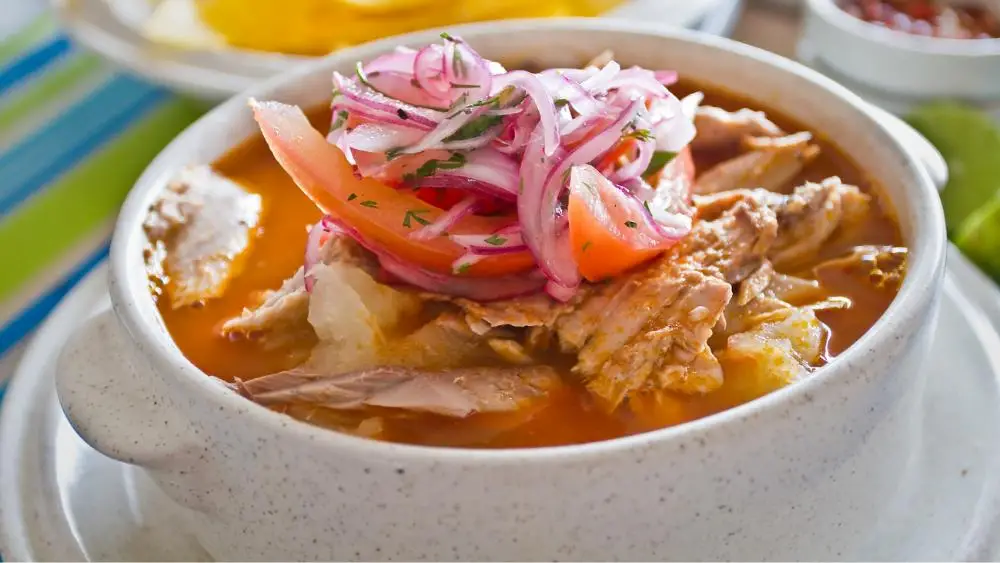
Ecuador, nestled between the Andes and the Amazon, boasts a culinary landscape as diverse as its geography. Forget generic stereotypes of tacos and burritos – Ecuadorian cuisine explodes with unique flavors, reflecting the country’s rich indigenous heritage, colonial influences, and vibrant regional specialties.
Buckle up, food adventurers, and prepare to embark on a delicious journey with these 5 iconic dishes:
Encebollado de Pescado
This iconic stew translates to “fish in onion sauce” and is a true taste of the Ecuadorian coast. Imagine tender chunks of fish simmered in a vibrant broth bursting with onions, tomatoes, peppers, and aji (chili pepper) for a spicy kick.
Served with fluffy white rice and a squeeze of lime, it’s a flavor fiesta that celebrates the bounty of the Pacific Ocean.
Llapingachos
These golden-fried potato pancakes aren’t your average diner fare. Imagine mashed potatoes seasoned with herbs and spices, shaped into patties, and fried to crispy perfection. Often filled with cheese, chorizo, or even fried egg, they’re a versatile and satisfying dish enjoyed throughout the Andes region.
Pair them with a creamy peanut sauce for an extra layer of complexity.
Bolón de Verde
This green plantain ball is a staple in Ecuadorian cuisine, enjoyed for breakfast, lunch, or a filling snack. Imagine a savory dough made from unripe plantains, often stuffed with cheese, meat, or vegetables, and cooked to a fluffy or crispy texture.
It’s a testament to Ecuador’s love for plantains and their ingenious ways of incorporating them into everyday meals.
Cuy Asado
Don’t be surprised – roasted guinea pig is a traditional dish in Ecuador, revered for its cultural significance and delicate flavor. Imagine tender, lean meat seasoned with herbs and spices, slowly roasted to perfection.
While it might seem unusual at first, consider this: guinea pigs have been a protein source for the Andes region for centuries, and their preparation is steeped in tradition.
Ají de Gallina
This creamy chicken stew is a true comfort food, warming you from the inside out. Imagine shredded chicken bathed in a rich and flavorful sauce made with aji amarillo peppers, spices, and sometimes milk or cream. Served with rice and vegetables, it’s a dish that embodies the warmth and hospitality of Ecuadorian cuisine.
Beyond the Bites
These 5 dishes are just a starting point for your Ecuadorian culinary adventure. Each region boasts its own specialties, from the seafood-rich dishes of the coast to the hearty stews of the Andes and the Amazonian delicacies like “maito” (fish cooked in leaves).
So, ditch the guidebooks and wander through local markets, engage with friendly vendors, and savor the unique flavors that each bite offers. Remember, Ecuadorian cuisine is more than just food; it’s a cultural experience, a journey through history and tradition, waiting to be discovered.
Buen Provecho!
Exploring Ecuadorian Street Food
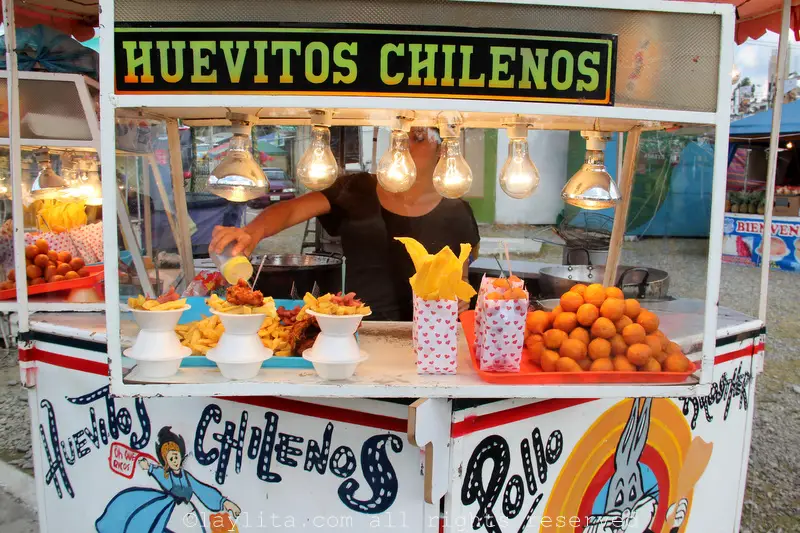
Forget Michelin-starred restaurants and pristine white tablecloths – Ecuador’s true culinary adventure lies beyond the conventional, unfolding on bustling street corners and vibrant plazas. Imagine the aroma of sizzling fritters, tangy ceviche, and sweet plantains enticing your senses as you navigate a kaleidoscope of flavors.
Ecuadorian street food is more than just a quick bite; it’s a cultural immersion, a celebration of local ingredients, and a testament to the country’s diverse culinary heritage.
But where should you start your delicious journey? Buckle up, foodies, as we explore 5 iconic street food treats:
Llapingachos
These golden-fried potato pancakes, hailing from the Andes, are a versatile staple. Imagine mashed potatoes seasoned with herbs and spices, shaped into patties, and fried to crispy perfection.
Often stuffed with cheese, chorizo, or even a fried egg, they’re a satisfying and budget-friendly option.
Bolón de Verde
This green plantain ball is a true Ecuadorian gem. Imagine savory dough made from unripe plantains, often stuffed with cheese, meat, or vegetables, and cooked to a fluffy or crispy texture.
It’s a testament to Ecuador’s love for plantains and their ingenious ways of incorporating them into everyday meals.
Empanadas de Viento
These light and fluffy fried empanadas, filled with cheese and onion, are a Quito classic. Imagine delicate pastries bursting with cheesy goodness and sprinkled with a touch of sugar for a sweet-savory contrast.
They’re perfect for a quick snack on the go.
Hornado
This slow-roasted pork is a beloved dish throughout Ecuador. Imagine tender, flavorful pork marinated in herbs and spices, cooked to perfection until falling off the bone.
Often served with mote (boiled white corn kernels), llapingachos, and aji (chili sauce), it’s a hearty and satisfying meal.
Ceviche
This refreshing seafood dish, particularly popular along the coast, is a true taste of the Pacific Ocean. Imagine fresh fish or shrimp marinated in citrus juices, onions, and spices, creating a vibrant and tangy flavor explosion. Served with chips, rice, or plantains, it’s a light and healthy option.
City Gems and Culinary Delights
While Ecuador offers street food delights nationwide, some cities boast particularly vibrant scenes:
- Quito: The capital city offers a diverse range of street food, from traditional Andean fare to modern twists. Explore La Mariscal district for empanadas de viento, or wander through Mercado Central for a taste of everything.
- Guayaquil: This coastal metropolis is known for its fresh seafood offerings. Indulge in ceviche along the Malecón, or savor bolones filled with shrimp or fish in local markets.
- Cuenca: This charming colonial city offers a taste of traditional Ecuadorian cuisine. Dig into hornado with all the trimmings in Plaza del Cordero, or sample local specialties like morcillas (blood sausage) and tortillas de maíz (corn tortillas).
Buen Provecho!
The Most Popular Ecuadorian Recipes

Ecuadorian cuisine is a delightful fusion of indigenous flavors, Spanish influences, and coastal abundance. From the Andes Mountains to the Amazon rainforest and the Pacific coast, Ecuador offers a diverse array of traditional dishes that will tantalize your taste buds. Let’s explore 10 must-try Ecuadorian recipes, each with its unique story and flavor profile:
Bolon de Verde
- Description: A national favorite, Bolon de Verde features mashed green plantains stuffed with pork or cheese. These baseball-sized balls are pan-fried to golden perfection, creating a crispy exterior and a soft, flavorful center.
- Serving Tip: Enjoy it for breakfast or brunch alongside a cup of strong Ecuadorian coffee.
Encocado de Pescado
- Description: This coastal delight showcases fish cooked in a luscious coconut sauce. Covina, a prized wild-caught fish, takes center stage. Serve it with white rice and fried plantains.
- Flavor Profile: Creamy, tropical, and utterly satisfying.
Ceviche
- Description: Ecuadorian ceviche stands out for its citrus-marinated seafood. Raw shrimp or fish is bathed in zesty juices, preserving its freshness and flavor.
- Best Spot: Head to Guayaquil’s seaport for the ultimate ceviche experience.
Encebollado de Pescado
- Description: A hearty fish soup made with albacore tuna broth, boiled yuca, pickled red onions, and a touch of lime juice. Served with fried green plantains or toasted corn.
- Perfect Pairing: Enjoy it with a side salad for a wholesome meal.
Torta de las Tres Leches
- Description: A moist white cake soaked in a sweet milk mixture made from condensed milk, heavy cream, and evaporated milk. The result? A heavenly dessert that melts in your mouth.
- Indulgence Level: High—prepare for a delightful sugar rush!
Dulce de Higos
- Description: Preserved figs cooked in a cane sugar and spice sauce. Pair it with unsalted cheese to balance the sweetness.
- Texture: Sticky, sweet, and utterly addictive.
Dulce de Leche (Manjar)
- Description: Versatile and beloved, dulce de leche graces Ecuadorian tables in various forms. Whether drizzled over pancakes or spread on bread, its caramel richness is irresistible.
- Fun Fact: It’s also known as “manjar” in Ecuador.
Tigrillo
- Description: A hearty breakfast dish featuring scrambled eggs, green plantains, cheese, and onions. A true Ecuadorian comfort food.
- Nickname: “Little tiger” due to its bold flavors.
Hornado de Chancho
- Description: Roasted pork leg marinated with garlic and beer. Crispy skin, tender meat—need we say more?
- Serving Style: Pair it with ripe plantains and avocado slices.
Guaguas de Pan
- Description: These adorable “bread babies” are sweet rolls shaped like infants. Traditionally served during the Day of the Dead (Día de los Difuntos) with colada morada (a purple corn drink).
- Symbolism: Honoring departed loved ones with a touch of sweetness.
Embark on a culinary adventure through Ecuador, savoring these iconic dishes that reflect the country’s rich history and vibrant culture. Buen provecho! 🇪🇨🍽️
What are the Health Implications of Ecuador’s Cuisine?
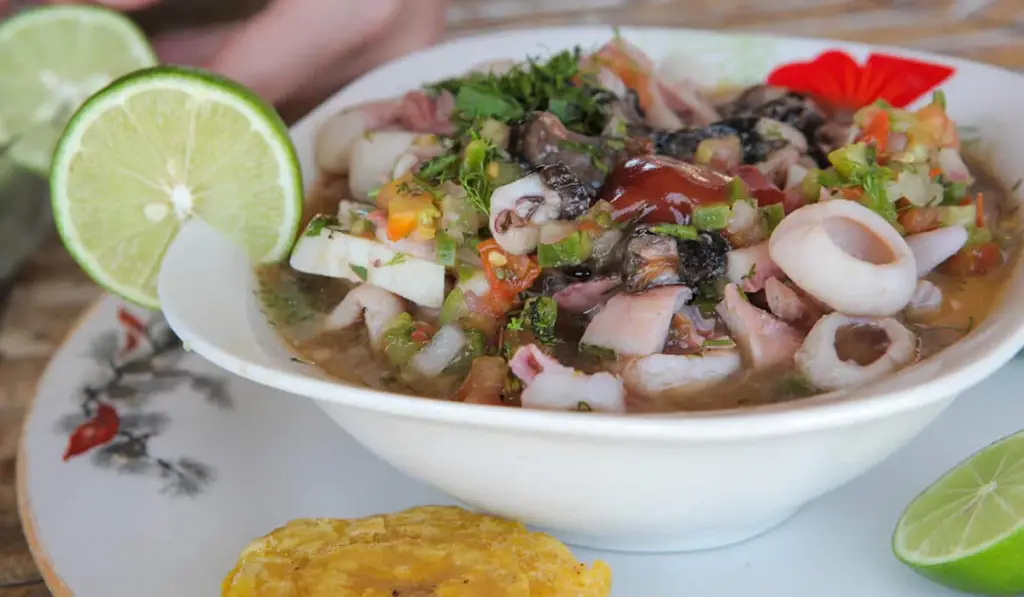
Ecuador’s cuisine is a diverse and delicious expression of the country’s geography, culture, and history. However, like any cuisine, it also has some health implications that depend on the ingredients, preparation methods, and consumption patterns of the people.
One of the positive aspects of Ecuador’s cuisine is the use of fresh and natural ingredients, many of which are native to the country and have been cultivated for centuries by the indigenous people.
Some of these ingredients are rich in nutrients, antioxidants, and fiber, such as quinoa, amaranth, chia, and cacao, which are considered superfoods by many experts. Other ingredients, such as corn, potatoes, yuca, plantains, rice, beans, and cheese, provide carbohydrates, protein, and calcium, which are essential for energy, growth, and bone health.
Ecuador’s cuisine also features a variety of fruits and vegetables, such as tomatoes, cucumbers, oranges, passionfruit, and tree tomato, which are sources of vitamins, minerals, and phytochemicals that can prevent and fight diseases. Ecuador’s cuisine also incorporates seafood, especially in the coastal region and the Galapagos Islands, where it is abundant and fresh.
Seafood is a source of omega-3 fatty acids, which are beneficial for the heart, brain, and immune system.
It’s not all Good News
However, Ecuador’s cuisine also has some negative aspects that can affect health and well-being. One of them is the high consumption of salt, sugar, and fat, which can increase the risk of hypertension, diabetes, and obesity.
- Salt is often added to soups, stews, and sauces, as well as to snacks, such as cancha and tostado.
- Sugar is often added to drinks, such as horchata and morocho, as well as to desserts, such as quesillo and dulce de leche.
- Fat is often used to fry foods, such as empanadas, llapingachos, and fritada, as well as to cook foods, such as encocado and seco de chivo.
- Another negative aspect of Ecuador’s cuisine is the low consumption of fiber, which can lead to constipation, diverticulitis, and colon cancer. Fiber is found in whole grains, fruits, vegetables, and legumes, but many Ecuadorians prefer refined grains, such as white rice and white bread, and peel or discard the skins and seeds of fruits and vegetables.
- Another negative aspect of Ecuador’s cuisine is the potential contamination of food and water, which can cause diarrhea, dysentery, and typhoid. Contamination can occur due to poor hygiene, inadequate refrigeration, or environmental pollution.
- Therefore, it is important to wash, peel, or cook food and water before consuming them, especially in rural areas or street markets.
Ecuadorian Cuisine Recipes to Try at Home
Are you ready to bring the flavors of Ecuador into your own kitchen? We’ve got you covered with some of the most authentic Ecuadorian food recipes.
Ecuadorian Food – Encebollado De Pescado

History and Background: Savoring Ecuadorian Coastal Traditions
Embark on a culinary journey to the coastal regions of Ecuador with Encebollado De Pescado, a beloved fish soup. Originating from the vibrant coastal communities, this dish reflects the Ecuadorian passion for fresh seafood and bold flavors.
Traditionally enjoyed as a hearty soup, Encebollado holds a special place in the hearts of locals. As a small restaurant owner and avid food explorer, I’m thrilled to share the coastal warmth and culinary traditions of Ecuador through this delightful recipe.
Ecuadorian Food – Ingredients: Crafting Ecuador’s Encebollado (Serves 4)
Savor the coastal flavors with these carefully curated ingredients:
- 1 lb fresh tuna fillets, cut into chunks
- 1 large red onion, thinly sliced
- 2 tomatoes, diced
- 1 bell pepper, thinly sliced
- 2 tablespoons achiote oil
- 4 cups fish or vegetable broth
- 1 cup yuca, peeled and diced
- 1 cup fresh cilantro, chopped
- 4 cloves garlic, minced
- 2 tablespoons ground cumin
- 2 tablespoons dried oregano
- Salt and pepper to taste
- Lime wedges for serving
Ecuadorian Food – Recipe: Crafting Encebollado Coastal Bliss
1. Prepare the Achiote Oil
In a small saucepan, heat achiote oil over low heat. This vibrant oil adds color and a subtle earthy flavor to the Encebollado.
2. Sauté Aromatics
In a large pot, sauté thinly sliced red onions, minced garlic, diced tomatoes, and sliced bell peppers until the vegetables are tender and aromatic.
3. Infuse Achiote Flavor
Pour the prepared achiote oil into the pot, infusing the Encebollado with its rich color and unique taste.
4. Add Tuna and Broth
Introduce the fresh tuna chunks to the pot, followed by the fish or vegetable broth. Allow the ingredients to simmer, enhancing the broth with the essence of the sea.
5. Incorporate Yuca and Seasonings
Add diced yuca to the pot, bringing a starchy element to the soup. Season the Encebollado with ground cumin, dried oregano, salt, and pepper. Let it simmer until the yuca is tender.
6. Garnish with Cilantro and Serve
Stir in fresh chopped cilantro just before serving to add a burst of freshness. Ladle the Encebollado into bowls and serve hot, accompanied by lime wedges for a zesty touch.
Estimated Cooking Time: 40 minutes
Nutritional Information (Per Serving):
- Calories: 300 kcal
- Protein: 25g
- Fat: 12g
- Carbohydrates: 20g
- Fiber: 4g
- Sugar: 4g
Immerse yourself in the coastal richness of Encebollado De Pescado, a dish that encapsulates the vibrant flavors of Ecuador’s coastal culinary heritage. Perfect for a comforting meal, this recipe promises to transport you to the sun-kissed shores of Ecuador with every spoonful.
Ecuadorian Food – Aguado de Gallina (Ecuadorian Chicken Rice Soup)

A Taste of Ecuador’s Culinary Warmth
Ecuador’s diverse cuisine embraces both indigenous and Spanish influences, creating dishes that reflect the country’s vibrant culture. One such comforting delight is “Aguado de Gallina,” an Ecuadorian Chicken Rice Soup.
Originating from the Andean region, this hearty soup has become a staple, celebrated for its nourishing warmth and delicious flavors. Let’s delve into the heartwarming history of this Ecuadorian culinary gem.
Ecuadorian Food – Ingredients: (Serves 4)
- 1 whole chicken, cut into pieces
- 1 cup rice
- 2 corn cobs, sliced into rounds
- 1 cup peas
- 1 cup carrots, diced
- 1 cup potatoes, diced
- 1 onion, finely chopped
- 3 cloves garlic, minced
- 1 teaspoon cumin
- 1 teaspoon achiote powder (or paprika)
- 1 tablespoon vegetable oil
- Salt and pepper to taste
- Fresh cilantro for garnish
- Lime wedges for serving
Ecuadorian Food – Recipe:
1. Preparing the Chicken (Serves 4):
Ingredients:
- 1 whole chicken, cut into pieces
- 1 onion, finely chopped
- 3 cloves garlic, minced
- Salt and pepper to taste
- Season the chicken pieces with salt, pepper, chopped onions, and minced garlic.
- In a large pot, heat vegetable oil and brown the chicken until golden on all sides.
2. Building Flavor (Serves 4):
Ingredients:
- 1 teaspoon cumin
- 1 teaspoon achiote powder (or paprika)
- Sprinkle cumin and achiote powder over the browned chicken to infuse the soup with rich flavors.
3. Simmering the Goodness (Serves 4):
Ingredients:
- 1 cup rice
- 2 corn cobs, sliced into rounds
- 1 cup peas
- 1 cup carrots, diced
- 1 cup potatoes, diced
- Add rice, corn, peas, carrots, and potatoes to the pot with the browned chicken.
- Pour in enough water to cover the ingredients and bring the soup to a boil.
- Reduce heat, cover, and simmer until the rice and vegetables are tender (approximately 20-25 minutes).
4. Finishing Touches (Serves 4):
Ingredients:
- Fresh cilantro for garnish
- Lime wedges for serving
- Garnish the soup with fresh cilantro.
- Serve hot with lime wedges on the side for a zesty touch.
Nutritional Information:
(Per serving)
- Calories: 380 kcal
- Protein: 25g
- Carbohydrates: 45g
- Fat: 12g
- Fiber: 5g
- Sugar: 4g
Immerse yourself in the heartwarming flavors of Ecuador with Aguado de Gallina, a soul-soothing soup that captures the essence of Andean comfort. This delightful recipe is a testament to the rich culinary tapestry that defines Ecuadorian cuisine.
Ecuadorian Food – Seco de Chivo (Braised Goat Stew)
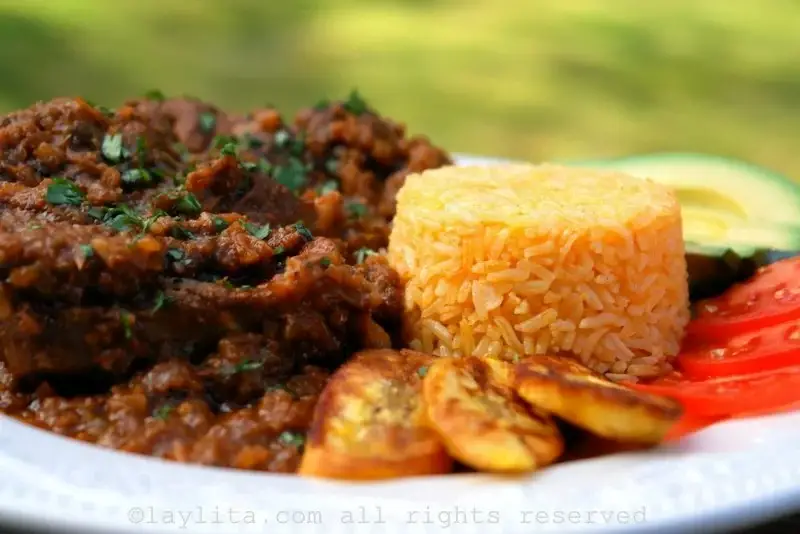
Unveiling Ecuador’s Culinary Heritage
In the highlands of Ecuador, where the Andean landscape meets indigenous traditions, emerges a culinary masterpiece known as “Seco de Chivo” or Braised Goat Stew. This hearty dish reflects the rich tapestry of Ecuadorian culture, combining flavors passed down through generations.
Let’s embark on a journey to discover the roots and essence of this Ecuadorian treasure.
Ecuadorian Food – Seco de Chivo – Ingredients: (Serves 6)
- 2 lbs goat meat, cut into chunks
- 2 cups chicha de jora (fermented corn beer)
- 1 large red onion, finely chopped
- 4 cloves garlic, minced
- 2 tomatoes, diced
- 2 bell peppers, sliced
- 1 bunch cilantro, chopped
- 1 teaspoon ground cumin
- 1 teaspoon achiote powder
- 2 tablespoons vegetable oil
- Salt and pepper to taste
- Rice for serving
Ecuadorian Food – Seco de Chivo Recipe:
1. Marinating the Goat (Serves 6):
Ingredients:
- 2 lbs goat meat, cut into chunks
- 2 cups chicha de jora (fermented corn beer)
- 1 large red onion, finely chopped
- 4 cloves garlic, minced
- In a bowl, marinate the goat meat with chicha de jora, chopped red onion, and minced garlic.
- Allow it to marinate for at least 2 hours or overnight for richer flavor.
2. Searing the Goat (Serves 6):
Ingredients:
- 2 tablespoons vegetable oil
- Marinated goat meat (from step 1)
- Heat vegetable oil in a large pot. Sear the marinated goat meat until browned on all sides.
3. Flavorful Infusion (Serves 6):
Ingredients:
- 2 tomatoes, diced
- 2 bell peppers, sliced
- 1 teaspoon ground cumin
- 1 teaspoon achiote powder
- Salt and pepper to taste
- Add diced tomatoes, sliced bell peppers, ground cumin, achiote powder, salt, and pepper to the pot with seared goat meat.
- Stir well, allowing the flavors to meld and the vegetables to soften.
4. Slow Braising (Serves 6):
Ingredients:
- Chopped cilantro (reserved for garnish)
- Pour in the chicha de jora marinade into the pot.
- Cover and simmer on low heat for 2-3 hours or until the goat meat is tender.
- Garnish with chopped cilantro before serving.
Nutritional Information:
(Per serving)
- Calories: 420 kcal
- Protein: 35g
- Carbohydrates: 12g
- Fat: 25g
- Fiber: 3g
- Sugar: 3g
Experience the heartwarming flavors of Ecuador with Seco de Chivo, a culinary journey into the Andean highlands that captures the spirit of tradition and indulgence. This robust Braised Goat Stew invites you to savor the authenticity of Ecuadorian cuisine.
Ecuadorian Food – Bolón De Verde

History and Background: A Taste of Ecuador’s Green Plantain Tradition
Embark on a culinary journey to the heart of Ecuador with Bolón De Verde, a delightful dish that hails from the lush coastal regions. Rooted in the country’s love for green plantains, Bolón De Verde is a savory fusion of flavors influenced by indigenous and Spanish culinary traditions.
Historically, this dish served as a hearty meal for field laborers, and today, it stands as a symbol of Ecuadorian comfort food. As a small restaurant owner and enthusiastic food explorer, I’m excited to share the warmth and history of Bolón De Verde with you.
Ecuadorian Food – Ingredients: Crafting Ecuador’s Bolón De Verde (Serves 4)
Delight in the flavors of Ecuador with these carefully selected ingredients:
- 4 green plantains, peeled and grated
- 1 cup queso fresco (fresh cheese), crumbled
- 1 cup chicharrón (fried pork belly or pork cracklings), crushed
- 1/2 cup white onion, finely chopped
- 2 tablespoons lard or vegetable oil
- 1 teaspoon salt
- 1/2 teaspoon black pepper
- Achiote oil (for brushing, optional)
Ecuadorian Food – Recipe: Crafting Bolón De Verde Bliss
1. Prepare the Green Plantains
Peel and grate the green plantains into a bowl. This forms the base of Bolón De Verde, providing a starchy and savory foundation.
2. Mix in Ingredients
Combine the grated plantains with crumbled queso fresco, crushed chicharrón, finely chopped white onion, salt, and black pepper. Mix well to ensure an even distribution of flavors.
3. Shape the Bolones
Take portions of the mixture and shape them into round balls, known as bolones. The size can vary based on preference, but a palm-sized bolón is a common choice.
4. Cook in Lard or Oil
In a skillet, heat lard or vegetable oil over medium heat. Cook the bolones until they are golden brown on all sides, ensuring a crispy exterior and a tender interior.
5. Optional Achiote Oil Brushing
For a traditional touch, you can brush the bolones with achiote oil before serving. This not only adds a vibrant color but also infuses a subtle, earthy flavor.
6. Serve and Enjoy
Plate the Bolón De Verde and serve hot. These savory plantain balls can be enjoyed on their own or paired with aji, a popular Ecuadorian hot sauce.
Estimated Cooking Time: 30 minutes
Nutritional Information (Per Serving):
- Calories: 350 kcal
- Protein: 12g
- Fat: 18g
- Carbohydrates: 40g
- Fiber: 4g
- Sugar: 12g
Indulge in the Ecuadorian warmth of Bolón De Verde, a dish that encapsulates the fusion of indigenous and Spanish culinary influences. Perfect for a satisfying snack or a unique side dish, this recipe promises to bring the flavors of Ecuador to your table.
Ecuadorian Food – Arroz Marinero (Seafood Rice)

History and Background: Savoring the Coastal Flavors of Arroz Marinero
Embark on a culinary exploration along the enchanting coasts of Ecuador with Arroz Marinero, a seafood-infused rice dish that embodies the country’s vibrant culinary tapestry. Originating from the coastal regions, Arroz Marinero celebrates the abundance of fresh seafood available in the Pacific Ocean.
This beloved dish reflects the fusion of indigenous ingredients with Spanish influences, creating a flavorful experience that has stood the test of time. As a small restaurant owner and avid food enthusiast, I’m thrilled to share the coastal warmth and history of Arroz Marinero with you.
Ecuadorian Food – Ingredients: Crafting Ecuador’s Arroz Marinero (Serves 6)
Dive into the coastal flavors of Ecuador with these carefully curated ingredients:
- 2 cups white rice, rinsed
- 1 lb mixed seafood (shrimp, fish, mussels), cleaned and deveined
- 1 onion, finely chopped
- 3 cloves garlic, minced
- 1 bell pepper, diced
- 1 tomato, diced
- 1/2 cup green peas
- 2 tablespoons vegetable oil
- 4 cups fish or seafood broth
- 1 teaspoon ground cumin
- 1 teaspoon achiote powder (annatto)
- Salt and pepper to taste
- Fresh cilantro for garnish
- Lime wedges for serving
Ecuadorian Food – Recipe: Crafting Arroz Marinero Coastal Bliss
1. Sauté Aromatics
In a large pan, heat vegetable oil over medium heat. Sauté finely chopped onions and minced garlic until they become golden and aromatic.
2. Add Bell Pepper and Tomato
Introduce diced bell pepper and tomato to the pan. Cook until the vegetables soften and release their flavors into the base of the dish.
3. Incorporate Seafood
Add the mixed seafood to the pan, distributing it evenly. Allow the seafood to cook briefly until it starts to turn opaque.
4. Season with Achiote and Cumin
Sprinkle ground cumin and achiote powder over the seafood mixture. These spices add depth and a warm, earthy color to the dish.
5. Add Rinsed Rice and Green Peas
Stir in the rinsed white rice, ensuring it is well-coated with the flavorful mixture. Add green peas for a burst of color and sweetness.
6. Pour in Broth and Simmer
Pour fish or seafood broth over the rice and seafood mixture. Bring the mixture to a gentle boil, then reduce the heat, cover, and let it simmer until the rice is cooked and the seafood is tender.
7. Garnish and Serve
Once cooked, fluff the rice with a fork. Garnish with fresh cilantro and serve hot, accompanied by lime wedges for a zesty touch.
Estimated Cooking Time: 30 minutes
Nutritional Information (Per Serving):
- Calories: 400 kcal
- Protein: 20g
- Fat: 10g
- Carbohydrates: 60g
- Fiber: 3g
- Sugar: 2g
Immerse yourself in the coastal richness of Arroz Marinero, a dish that captures the essence of Ecuador’s seafood bounty. Perfect for a family gathering or a dinner with friends, this recipe promises to transport you to the sun-kissed shores of Ecuador with every flavorful bite.
Ecuadorian Food – Menestra De Lentejas (Ecuadorian Lentil Stew)

History and Background: Embracing Ecuador’s Lentil Tradition
Embark on a culinary journey to the heart of Ecuador with Menestra De Lentejas, a wholesome lentil stew deeply rooted in the country’s culinary traditions. Originating from the Andean highlands, this dish reflects the fusion of indigenous ingredients with Spanish influences.
Menestra De Lentejas has become a staple in Ecuadorian households, providing comfort and nourishment for generations. As a small restaurant owner and devoted food explorer, I’m delighted to share the warmth and history of Menestra De Lentejas with you.
Ecuadorian Food – Ingredients: Crafting Ecuador’s Menestra De Lentejas (Serves 4)
Delight in the flavors of Ecuador with these carefully selected ingredients:
- 1 cup dry lentils, rinsed
- 1 onion, finely chopped
- 2 carrots, diced
- 2 tomatoes, diced
- 2 garlic cloves, minced
- 1 cup spinach, chopped
- 1/2 cup rice
- 4 cups vegetable broth
- 2 tablespoons vegetable oil
- 1 teaspoon ground cumin
- 1 teaspoon paprika
- Salt and pepper to taste
- Lime wedges for serving
Ecuadorian Food – Recipe: Crafting Menestra De Lentejas Comfort
1. Sauté Aromatics
In a large pot, heat vegetable oil over medium heat. Sauté finely chopped onions and minced garlic until they become golden and fragrant.
2. Add Vegetables and Lentils
Introduce diced carrots, diced tomatoes, and rinsed lentils to the pot. Stir well to combine the vegetables with the aromatics.
3. Season with Cumin and Paprika
Sprinkle ground cumin and paprika over the mixture, infusing it with warm, earthy flavors. Season with salt and pepper to taste.
4. Pour in Vegetable Broth
Add vegetable broth to the pot, ensuring it covers the lentils and vegetables. Bring the mixture to a gentle boil.
5. Simmer and Add Rice
Reduce the heat to low, cover the pot, and let the Menestra De Lentejas simmer for approximately 20-25 minutes or until the lentils are tender. Stir in rice and continue simmering until the rice is cooked.
6. Add Spinach and Serve
In the final minutes of cooking, add chopped spinach to the stew. Stir until the spinach wilts. Serve hot, accompanied by lime wedges for a burst of citrus freshness.
Estimated Cooking Time: 40 minutes
Nutritional Information (Per Serving):
- Calories: 300 kcal
- Protein: 15g
- Fat: 7g
- Carbohydrates: 50g
- Fiber: 12g
- Sugar: 5g
Immerse yourself in the comforting flavors of Menestra De Lentejas, a dish that encapsulates the heart and soul of Ecuadorian home cooking. Perfect for a nourishing family meal, this recipe promises to bring the essence of the Andean highlands to your dining table.
Ecuadorian Food – Ají De Gallina

History and Background: Unraveling the Tale of Ají De Gallina
Embark on a culinary journey through the vibrant flavors of Ecuador with Ají De Gallina, a dish that mirrors the country’s rich history and diverse influences. Originating from the colonial era, this recipe showcases the fusion of indigenous, Spanish, and African culinary traditions.
Ají De Gallina has evolved into a beloved comfort food, celebrated for its creamy texture and bold spice. As a small restaurant owner and avid food enthusiast, I’m excited to share the warmth and history of Ají De Gallina with you.
Ecuadorian Food – Ingredients: Crafting Ecuador’s Ají De Gallina (Serves 4)
Indulge in the Ecuadorian flavors with these carefully chosen ingredients:
- 2 cups shredded cooked chicken
- 1 cup aji amarillo paste (yellow chili pepper paste)
- 1 cup bread crumbs
- 1 cup evaporated milk
- 1/2 cup grated Parmesan cheese
- 1/2 cup chopped walnuts
- 1 onion, finely chopped
- 2 cloves garlic, minced
- 4 boiled eggs, sliced
- 4 cups cooked white rice
- 4 potatoes, boiled and sliced
- 2 tablespoons vegetable oil
- Salt and pepper to taste
- Fresh parsley for garnish
Ecuadorian Food – Recipe: Crafting Ají De Gallina Spice
1. Sauté Aromatics
In a pan, heat vegetable oil over medium heat. Sauté finely chopped onions and minced garlic until they are golden and fragrant.
2. Add Aji Amarillo Paste and Bread Crumbs
Introduce aji amarillo paste to the pan, stirring it into the aromatics. Add bread crumbs and continue stirring until the mixture becomes a golden paste.
3. Mix in Shredded Chicken
Add shredded cooked chicken to the pan, coating it evenly with the aji amarillo paste mixture. Allow the flavors to meld for a few minutes.
4. Incorporate Milk and Cheese
Pour in evaporated milk, grated Parmesan cheese, and chopped walnuts. Stir well to create a creamy and nutty consistency. Season with salt and pepper to taste.
5. Simmer and Garnish
Let the Ají De Gallina simmer for about 15 minutes, allowing the flavors to intensify. Garnish with fresh parsley for a burst of color and freshness.
6. Serve with Rice, Potatoes, and Eggs
Plate cooked white rice, sliced boiled potatoes, and boiled egg slices. Ladle the Ají De Gallina over the arrangement. Serve hot and enjoy the explosion of flavors.
Estimated Cooking Time: 40 minutes
Nutritional Information (Per Serving):
- Calories: 600 kcal
- Protein: 35g
- Fat: 25g
- Carbohydrates: 60g
- Fiber: 5g
- Sugar: 5g
Immerse yourself in the Ecuadorian spice of Ají De Gallina, a dish that captures the essence of the country’s culinary diversity. Perfect for a flavorful family dinner, this recipe promises to bring the taste of Ecuador to your dining table.
Ecuadorian Food – Vegetarian Ceviche De Chochos

History and Background: A Fresh Twist on Tradition
Embark on a culinary voyage through Ecuador with a vegetarian twist on a classic – Vegetarian Ceviche De Chochos. Originating from the coastal regions, traditional ceviche typically features seafood, but this vegetarian adaptation introduces chochos, a local legume.
This refreshing dish showcases the vibrant and diverse culinary tapestry of Ecuador, marrying traditional flavors with a modern twist. As a small restaurant owner and passionate food explorer, I’m excited to share the coastal freshness and history of Vegetarian Ceviche De Chochos with you.
Ecuadorian Food – Ingredients: Crafting Ecuador’s Vegetarian Ceviche De Chochos (Serves 4)
Indulge in the vibrant flavors of Ecuador with these carefully chosen ingredients:
- 2 cups chochos (lupini beans), cooked and peeled
- 2 tomatoes, diced
- 1 red onion, finely chopped
- 1 bell pepper (any color), diced
- 1 cucumber, diced
- 1 avocado, diced
- 1 bunch cilantro, chopped
- 4 limes, juiced
- 2 tablespoons olive oil
- 1 teaspoon ground cumin
- Salt and pepper to taste
- Plantain or corn chips for serving
Ecuadorian Food – Recipe: Crafting Vegetarian Ceviche De Chochos Freshness
1. Prepare Chochos
Cook chochos according to package instructions. Once cooked, peel the chochos to reveal the tender beans.
2. Mix Chochos and Vegetables
In a large bowl, combine the cooked and peeled chochos with diced tomatoes, finely chopped red onion, diced bell pepper, diced cucumber, diced avocado, and chopped cilantro.
3. Prepare the Dressing
In a small bowl, whisk together lime juice, olive oil, ground cumin, salt, and pepper to create a zesty dressing.
4. Toss and Chill
Pour the dressing over the chocho and vegetable mixture. Gently toss everything together until well-coated. Allow the ceviche to chill in the refrigerator for at least 30 minutes to let the flavors meld.
5. Serve with Chips
When ready to serve, plate the Vegetarian Ceviche De Chochos and accompany it with plantain or corn chips for a satisfying crunch.
Estimated Cooking Time: 15 minutes
Nutritional Information (Per Serving):
- Calories: 250 kcal
- Protein: 10g
- Fat: 10g
- Carbohydrates: 35g
- Fiber: 12g
- Sugar: 5g
Immerse yourself in the freshness of Vegetarian Ceviche De Chochos, a dish that adds a vibrant twist to Ecuador’s coastal culinary heritage. Perfect for a light and refreshing meal, this recipe promises to bring the flavors of Ecuador to your table with every delightful bite.
Ecuadorian Food – Tuna Fish Ceviche {Ceviche Volquetero}

History and Background: Coastal Splendor in Ceviche Volquetero
Embark on a culinary voyage along the sun-kissed coasts of Ecuador with Tuna Fish Ceviche, locally known as Ceviche Volquetero. Originating from the coastal city of Manta, this variation of ceviche showcases the abundant marine treasures of the Pacific.
Manta is renowned for its vibrant fishing culture, and this dish pays homage to the region’s culinary heritage. As a small restaurant owner and dedicated food enthusiast, I’m thrilled to share the coastal elegance and history of Tuna Fish Ceviche with you.
Ecuadorian Food – Ingredients: Crafting Ecuador’s Tuna Fish Ceviche (Serves 4)
Indulge in the coastal flavors of Ecuador with these carefully selected ingredients:
- 1 lb fresh tuna, diced
- 4 limes, juiced
- 1 red onion, finely chopped
- 1 bell pepper (any color), diced
- 2 tomatoes, diced
- 1 cucumber, diced
- 1 avocado, diced
- 1 bunch cilantro, chopped
- 2 tablespoons olive oil
- 1 teaspoon ground cumin
- Salt and pepper to taste
- Plantain or corn chips for serving
Ecuadorian Food – Recipe: Crafting Tuna Fish Ceviche Brilliance
1. Prepare Fresh Tuna
Start by dicing fresh tuna into bite-sized pieces. Ensure the tuna is of the highest quality for a delightful ceviche experience.
2. Marinate Tuna with Lime Juice
In a bowl, marinate the diced tuna with the juice of freshly squeezed limes. Allow it to sit for at least 10 minutes to let the citrus flavors permeate the fish.
3. Mix in Vegetables
Combine the lime-marinated tuna with finely chopped red onion, diced bell pepper, tomatoes, cucumber, diced avocado, and chopped cilantro in a large bowl.
4. Create Zesty Dressing
Whisk together olive oil, ground cumin, salt, and pepper to create a zesty dressing. Pour the dressing over the tuna and vegetable mixture.
5. Toss and Chill
Gently toss the ingredients until well-coated with the dressing. Allow the ceviche to chill in the refrigerator for about 15-20 minutes to enhance the flavors.
6. Serve with Chips
When ready to serve, plate the Tuna Fish Ceviche and accompany it with plantain or corn chips for a satisfying crunch.
Estimated Cooking Time: 30 minutes
Nutritional Information (Per Serving):
- Calories: 300 kcal
- Protein: 25g
- Fat: 15g
- Carbohydrates: 20g
- Fiber: 8g
- Sugar: 5g
Immerse yourself in the brilliance of Tuna Fish Ceviche, a dish that captures the essence of Ecuador’s coastal elegance. Perfect for a refreshing meal, this recipe promises to bring the flavors of Manta’s shores to your table with every delectable bite.
Ecuadorian Food – Torta De Las Tres Leches

History and Background: Savoring Sweetness in Torta De Las Tres Leches
Embark on a delightful journey into the heart of Ecuador’s dessert culture with Torta De Las Tres Leches. Originating from Latin America, this decadent cake is a staple in Ecuadorian households, especially during celebrations.
The name “Tres Leches” translates to “Three Milks,” signifying the trio of condensed milk, evaporated milk, and regular milk used to soak the cake. As a small restaurant owner and passionate dessert connoisseur, I’m excited to share the sweetness and history of Torta De Las Tres Leches with you.
Ecuadorian Food – Ingredients: Crafting Ecuador’s Torta De Las Tres Leches (Serves 8)
Indulge in the sweet flavors of Ecuador with these carefully chosen ingredients:
- 1 cup all-purpose flour
- 1 teaspoon baking powder
- 1/2 cup unsalted butter, softened
- 1 cup granulated sugar
- 5 large eggs
- 1 teaspoon vanilla extract
- 1 can (14 ounces) sweetened condensed milk
- 1 can (12 ounces) evaporated milk
- 1 cup whole milk
- 2 cups whipped cream
- Ground cinnamon for garnish
Ecuadorian Food – Recipe: Crafting Torta De Las Tres Leches Sweet Extravaganza
1. Prepare the Cake
Ingredients:
- 1 cup all-purpose flour
- 1 teaspoon baking powder
Instructions:
- Preheat the oven to 350°F (175°C). Grease and flour a 9×13-inch baking pan.
- In a bowl, whisk together the flour and baking powder.
- In another bowl, cream together the softened butter and granulated sugar until light and fluffy.
- Add the eggs one at a time, beating well after each addition. Stir in the vanilla extract.
- Gradually fold in the dry ingredients until just combined.
- Pour the batter into the prepared pan and smooth the top.
- Bake for 25-30 minutes or until a toothpick inserted into the center comes out clean.
2. Soak with Three Milks
Ingredients:
- 1 can (14 ounces) sweetened condensed milk
- 1 can (12 ounces) evaporated milk
- 1 cup whole milk
Instructions:
- Once the cake is baked and cooled, poke holes all over the surface with a fork.
- In a bowl, whisk together the sweetened condensed milk, evaporated milk, and whole milk.
- Slowly pour the milk mixture over the cake, allowing it to soak in. Refrigerate the cake for at least 2 hours or overnight.
3. Frost with Whipped Cream
Ingredients:
- 2 cups whipped cream
Instructions:
- Spread whipped cream over the chilled cake, creating a smooth and luscious layer.
- Sprinkle ground cinnamon on top for a final touch.
4. Serve and Enjoy
Slice the Torta De Las Tres Leches into squares and serve chilled. Indulge in the sweet extravagance of this classic Ecuadorian dessert.
Estimated Cooking Time: 1 hour (including baking and chilling)
Nutritional Information (Per Serving):
- Calories: 400 kcal
- Protein: 8g
- Fat: 20g
- Carbohydrates: 50g
- Fiber: 1g
- Sugar: 35g
Immerse yourself in the sweet extravagance of Torta De Las Tres Leches, a dessert that captures the essence of Ecuador’s celebratory spirit. Perfect for sharing with friends and family, this recipe promises to bring joy to your table with every delectable bite.
Ecuadorian Food – Dulce De Higos

History and Background: Nurturing Tradition in Dulce De Higos
Embark on a journey into Ecuador’s sweet traditions with Dulce De Higos, a delightful treat deeply rooted in the country’s culinary heritage. Originating from the coastal and Andean regions, this dessert showcases the versatility of figs.
Traditionally enjoyed during special occasions and celebrations, Dulce De Higos is a testament to Ecuador’s love for locally sourced, flavorful ingredients. As a small restaurant owner and avid culinary explorer, I’m thrilled to share the sweetness and history of Dulce De Higos with you.
Ecuadorian Food – Ingredients: Crafting Ecuador’s Dulce De Higos (Serves 6)
Indulge in the rich flavors of Ecuador with these carefully selected ingredients:
- 2 cups dried figs
- 2 cups water
- 1 cup brown sugar
- 1 cinnamon stick
- 3 cloves
- 1 tablespoon orange zest
- 1 tablespoon lemon juice
- Whipped cream or vanilla ice cream for serving (optional)
Ecuadorian Food – Recipe: Crafting Dulce De Higos Sweetness
1. Rehydrate Dried Figs
Ingredients:
- 2 cups dried figs
- 2 cups water
Instructions:
- In a saucepan, combine dried figs with water.
- Bring to a boil, then reduce heat and simmer for 15-20 minutes until the figs are plump and rehydrated.
2. Create the Syrup
Ingredients:
- 1 cup brown sugar
- 1 cinnamon stick
- 3 cloves
- 1 tablespoon orange zest
- 1 tablespoon lemon juice
Instructions:
- Add brown sugar, cinnamon stick, cloves, orange zest, and lemon juice to the rehydrated figs.
- Simmer the mixture over low heat, stirring occasionally, until the sugar dissolves and forms a syrupy consistency.
3. Cook the Figs in Syrup
Instructions:
- Continue simmering the figs in the syrup for an additional 20-30 minutes until they absorb the flavors and become tender.
4. Serve and Enjoy
Instructions:
- Once the figs are tender and the syrup has thickened, remove the cinnamon stick and cloves.
- Allow the Dulce De Higos to cool before serving.
- Optionally, serve with a dollop of whipped cream or a scoop of vanilla ice cream for an extra indulgent touch.
Estimated Cooking Time: 1 hour
Nutritional Information (Per Serving):
- Calories: 200 kcal
- Protein: 1g
- Fat: 0g
- Carbohydrates: 50g
- Fiber: 5g
- Sugar: 45g
Immerse yourself in the sweetness of Dulce De Higos, a dessert that encapsulates the heartwarming traditions of Ecuador. Perfect for sharing with loved ones, this recipe promises to bring a touch of Ecuadorian joy to your table with every delectable bite.
Ecuadorian Food – Dulce De Leche (Manjar)

History and Background: Nostalgia in Every Spoonful of Dulce De Leche
Indulge in the sweet nostalgia of Ecuadorian culture with Dulce De Leche, locally known as Manjar. This luscious caramelized milk treat has its roots deeply embedded in Ecuador’s culinary heritage, drawing inspiration from the country’s rich dairy farming traditions.
The name “Manjar” itself means “delicacy,” and this sweet confection lives up to its name, gracing tables during festive occasions and family gatherings. As a small restaurant owner and devoted culinary storyteller, I’m excited to share the sweetness and history of Dulce De Leche with you.
Ingredients: Crafting Ecuador’s Dulce De Leche (Serves 12)
Delight in the rich flavors of Ecuador with these carefully chosen ingredients:
- 2 quarts whole milk
- 2 cups granulated sugar
- 1 teaspoon baking soda
- 1 teaspoon vanilla extract
- A pinch of salt
Ecuadorian Food – Recipe: Crafting Dulce De Leche Elegance
1. Begin the Milk Transformation
Ingredients:
- 2 quarts whole milk
- 2 cups granulated sugar
- 1 teaspoon baking soda
Instructions:
- In a large, heavy-bottomed pot, combine whole milk, granulated sugar, and baking soda.
- Place the pot over medium heat and bring the mixture to a gentle boil, stirring constantly.
2. Let the Magic Unfold
Instructions:
- Once boiling, reduce the heat to low, allowing the milk to simmer slowly.
- Stir regularly to prevent the mixture from sticking to the bottom of the pot.
3. Infuse with Flavor
Ingredients:
- 1 teaspoon vanilla extract
- A pinch of salt
Instructions:
- After about 1.5 to 2 hours of simmering, when the mixture thickens and turns a rich caramel color, add vanilla extract and a pinch of salt.
- Continue to simmer for an additional 15-20 minutes, stirring consistently.
4. Achieve Creamy Consistency
Instructions:
- The Dulce De Leche is ready when it reaches a thick, creamy consistency.
- Remove it from heat and let it cool to room temperature.
5. Store or Serve
Instructions:
- Once cooled, transfer the Dulce De Leche to a jar or airtight container.
- Refrigerate for a few hours before serving for an optimal taste experience.
Estimated Cooking Time: 2.5 to 3 hours
Nutritional Information (Per Serving):
- Calories: 150 kcal
- Protein: 4g
- Fat: 5g
- Carbohydrates: 25g
- Sugar: 20g
Immerse yourself in the elegance of Dulce De Leche, a delicacy that mirrors the heartwarming traditions of Ecuador. Perfect for adding a touch of sweetness to your desserts or simply enjoying it by the spoonful, this recipe promises to bring a piece of Ecuadorian sweetness to your home.
Ecuadorian Food – Tigrillo

History and Background: Jungle Flavors in Ecuador’s Tigrillo Tradition
Embark on a culinary adventure deep into the heart of Ecuador with Tigrillo, a traditional dish hailing from the Amazonian region. Rooted in the rich biodiversity of the jungle, Tigrillo reflects the fusion of indigenous ingredients and culinary influences.
Often enjoyed as a hearty breakfast or brunch, Tigrillo showcases Ecuador’s commitment to celebrating its diverse cultural and natural tapestry. As a small restaurant owner and avid food explorer, I’m thrilled to share the flavors and history of Tigrillo with you.
Ecuadorian Food – Ingredients: Crafting Ecuador’s Tigrillo (Serves 4)
Immerse yourself in the jungle flavors of Ecuador with these carefully selected ingredients:
- 4 green plantains
- 2 tablespoons butter or oil
- 1 cup queso fresco (fresh cheese), crumbled
- 4 eggs
- 1 cup choclo (hominy corn), cooked
- 1 tablespoon achiote oil (annatto oil)
- Salt and pepper to taste
- Fresh cilantro for garnish
Ecuadorian Food – Recipe: Crafting Tigrillo Jungle Magic
1. Prepare the Plantains
Ingredients:
- 4 green plantains
Instructions:
- Peel the green plantains and grate them using a box grater.
2. Cook the Plantains
Ingredients:
- 2 tablespoons butter or oil
- Salt and pepper to taste
Instructions:
- In a skillet, heat butter or oil over medium heat.
- Add the grated plantains and cook until they soften, stirring occasionally.
- Season with salt and pepper to taste.
3. Scramble the Eggs
Ingredients:
- 4 eggs
Instructions:
- In a separate pan, scramble the eggs until fully cooked.
4. Combine the Ingredients
Ingredients:
- 1 cup queso fresco, crumbled
- 1 cup choclo (hominy corn), cooked
Instructions:
- Add crumbled queso fresco and cooked choclo to the pan with the cooked plantains.
- Mix everything together until well combined.
5. Infuse with Achiote Oil
Ingredients:
- 1 tablespoon achiote oil (annatto oil)
Instructions:
- Drizzle achiote oil over the mixture, giving it a vibrant color and a hint of earthy flavor.
6. Final Touch and Serve
Instructions:
- Garnish with fresh cilantro for a burst of freshness.
- Serve Tigrillo hot and enjoy the jungle magic on your plate.
Estimated Cooking Time: 30 minutes
Nutritional Information (Per Serving):
- Calories: 350 kcal
- Protein: 12g
- Fat: 15g
- Carbohydrates: 45g
- Fiber: 6g
- Sugar: 10g
Immerse yourself in the jungle magic of Tigrillo, a dish that brings the flavors of the Ecuadorian Amazon to your table. Perfect for a hearty breakfast or brunch, this recipe promises to awaken your taste buds with the richness of the jungle’s bounty.
Ecuadorian Food – Hornado De Chancho

History and Background: A Feast Rooted in Ecuadorian Heritage
Embark on a culinary journey through the highlands of Ecuador with Hornado De Chancho, a dish deeply entrenched in the country’s rich gastronomic heritage. Originating from the Andean region, this traditional feast involves slow-roasting pork until it reaches a state of mouthwatering perfection.
Often associated with celebrations and communal gatherings, Hornado De Chancho is a testament to Ecuador’s love for communal feasting and hearty flavors. As a small restaurant owner and enthusiast of Ecuadorian cuisine, I’m excited to share the history and flavors of Hornado De Chancho with you.
Ecuadorian Food – Ingredients: Crafting Ecuador’s Hornado De Chancho (Serves 6-8)
Delight in the robust flavors of Ecuador with these carefully selected ingredients:
- 4-5 lbs pork shoulder or leg
- 1 cup beer (preferably a light beer)
- 1 cup orange juice
- 4 cloves garlic, minced
- 2 tablespoons achiote paste
- 1 tablespoon ground cumin
- 1 tablespoon dried oregano
- Salt and pepper to taste
- 2 tablespoons vegetable oil
- 4 cups hominy corn (choclo), cooked
- 4 llapingachos (potato patties), for serving
- Aji criollo (Ecuadorian hot sauce), for serving
Ecuadorian Food – Recipe: Crafting Hornado De Chancho Elegance
1. Marinate the Pork
Ingredients:
- 4-5 lbs pork shoulder or leg
- 1 cup beer
- 1 cup orange juice
- 4 cloves garlic, minced
- 2 tablespoons achiote paste
- Salt and pepper to taste
Instructions:
- In a large bowl, combine the pork with beer, orange juice, minced garlic, achiote paste, salt, and pepper.
- Allow the pork to marinate for at least 4 hours or overnight for maximum flavor.
2. Preheat and Roast
Ingredients:
- Marinated pork (from step 1)
Instructions:
- Preheat the oven to 325°F (160°C).
- Place the marinated pork in a roasting pan and cover with aluminum foil.
- Roast in the preheated oven for approximately 3-4 hours or until the pork is tender and easily falls apart.
3. Prepare the Seasoning
Ingredients:
- 2 tablespoons vegetable oil
- 1 tablespoon ground cumin
- 1 tablespoon dried oregano
Instructions:
- In a small saucepan, heat vegetable oil and add ground cumin and dried oregano.
- Cook the seasoning over low heat for a few minutes until fragrant.
4. Finish and Serve
Ingredients:
- Roasted pork (from step 2)
- Seasoning (from step 3)
- 4 cups hominy corn (choclo), cooked
- 4 llapingachos (potato patties)
- Aji criollo (Ecuadorian hot sauce)
Instructions:
- Once the pork is done, remove it from the oven and brush the seasoning over the top.
- Serve Hornado De Chancho with cooked hominy corn, llapingachos, and a side of Aji criollo.
- Enjoy the communal feast with friends and family!
Estimated Cooking Time: 4-5 hours (including marination and roasting)
Nutritional Information (Per Serving):
- Calories: 500 kcal
- Protein: 30g
- Fat: 25g
- Carbohydrates: 40g
- Fiber: 5g
- Sugar: 5g
Immerse yourself in the grandeur of Hornado De Chancho, a dish that embodies the warmth and flavors of the Ecuadorian Andes. Perfect for festive occasions, this recipe promises to bring the heartiness of communal feasting to your own table.
Ecuadorian Food – Guaguas De Pan

The Ecuadorian Culinary Tapestry
Ecuador, a country nestled in the heart of South America, boasts a rich culinary heritage that reflects its diverse landscapes and indigenous traditions. One standout dish that captures the essence of Ecuadorian cuisine is “Guaguas De Pan.” Translated as “bread babies” in English, these sweet bread figurines are an integral part of Ecuador’s Día de los Difuntos, or Day of the Dead, celebrations.
With a history rooted in pre-Columbian times, the tradition of crafting these symbolic breads has endured, making them a cherished and delicious part of Ecuadorian culture.
Ecuadorian Food – Ingredients:
- 4 cups all-purpose flour
- 1 cup warm milk
- 1/2 cup sugar
- 1/4 cup butter, melted
- 2 teaspoons active dry yeast
- 1 teaspoon salt
- 1 teaspoon ground cinnamon
- 1/2 teaspoon ground anise seeds
- 1/4 teaspoon ground cloves
- 4 large eggs
- Raisins for decoration
Ecuadorian Food – Recipe:
1. Preparing the Dough (Serves 6):
Ingredients:
- 4 cups all-purpose flour
- 1 cup warm milk
- 1/4 cup butter, melted
- 2 teaspoons active dry yeast
- 1/4 cup sugar
- In a bowl, combine warm milk and sugar. Add yeast and let it sit for 5 minutes until it foams.
- In a large mixing bowl, combine flour and melted butter. Pour in the yeast mixture and mix until a dough forms.
- Knead the dough on a floured surface for 8-10 minutes until smooth and elastic.
- Place the dough in a greased bowl, cover it, and let it rise for 1-2 hours or until it doubles in size.
2. Shaping the Guaguas (Serves 6):
Ingredients:
- 1/2 cup sugar
- 1 teaspoon ground cinnamon
- 1/2 teaspoon ground anise seeds
- 1/4 teaspoon ground cloves
- Raisins for decoration
- In a small bowl, mix sugar, cinnamon, anise seeds, and cloves to create a spice blend.
- Punch down the risen dough and divide it into 6 equal portions. Shape each into a small round ball.
- Flatten each ball into a disk and use a knife or cookie cutter to create baby-shaped figures, adding facial features with raisins.
3. Final Touch and Baking (Serves 6):
Ingredients:
- 4 large eggs
- Beat the eggs and brush them over the shaped Guaguas for a shiny finish.
- Preheat the oven to 350°F (180°C).
- Place the Guaguas on a baking sheet and bake for 15-20 minutes or until golden brown.
Nutritional Information:
(Per serving)
- Calories: 350 kcal
- Protein: 8g
- Carbohydrates: 60g
- Fat: 9g
- Fiber: 2g
- Sugar: 15g
Embark on a culinary journey with Guaguas De Pan, connecting with Ecuador’s vibrant history and savoring the delightful flavors woven into these symbolic bread babies.
Ecuador Cuisine – Ceviche

Ecuador Cuisine – Ceviche Background and History
The origin of ceviche is disputed, but some historians believe it originated in Peru, where it is considered a national dish and cultural heritage, while others suggest it came from Ecuador, where it is also very common and diverse.
Ceviche has a long history that dates back to the pre-Columbian times, when the indigenous people used to cure their fish with salt, chilies, and tumbo, a sour fruit. The arrival of the Spanish introduced citrus fruits, onions, and other ingredients that influenced the modern version of ceviche.
Ceviche is usually served cold as an appetizer or a main course, and it can be made with different types of fish and seafood, as well as various vegetables, herbs, and sauces.
Ecuador Cuisine – Ceviche Ingredients
To make a traditional Ecuadorian ceviche, you will need the following ingredients:
- 1 pound of fresh, skinless, and boneless white fish fillets, such as corvina, halibut, or sea bass, cut into bite-sized pieces
- 1 cup of freshly squeezed lime juice
- 1/4 cup of freshly squeezed orange juice
- 1/4 cup of ketchup
- 2 tablespoons of vegetable oil
- Salt and pepper to taste
- 1/4 teaspoon of ground cumin
- 1/4 teaspoon of dried oregano
- 1 red onion, thinly sliced
- 2 tomatoes, diced
- 1/4 cup of chopped cilantro
- 2 jalapeño peppers, seeded and minced
- 1/4 cup of chopped parsley
- 1/4 cup of chopped green olives
- 1 avocado, peeled and diced
- Tortilla chips, plantain chips, or popcorn for serving
Ecuador Cuisine – Ceviche Recipe
The steps to make the ceviche are as follows:
- In a large glass or ceramic bowl, combine the fish and lime juice, making sure the fish is completely covered by the juice. Refrigerate for about 2 hours, or until the fish turns opaque and firm.
- In a small bowl, whisk together the orange juice, ketchup, oil, salt, pepper, cumin, and oregano. Set aside.
- Drain the fish and discard the lime juice. Return the fish to the bowl and add the onion, tomato, cilantro, jalapeño, parsley, and olives. Toss well to combine.
- Pour the orange juice mixture over the fish and toss gently to coat. Refrigerate for another hour to let the flavors meld.
- Before serving, stir in the avocado and adjust the seasoning if needed. Serve cold or at room temperature, with tortilla chips, plantain chips, or popcorn on the side. Enjoy!
Ecuador Cuisine – locro de papas

Background and History – Locro de papas
Locro de papas is a traditional Ecuadorian soup made of potato and cheese. It originates from the Andean region of Ecuador, where potatoes are a staple crop and cheese is a common dairy product.
The soup is seasoned with achiote, a spice derived from the seeds of the anchiote tree, which gives it a distinctive yellow color and a nutty flavor. Locro de papas is a hearty and comforting dish that is usually served with avocado, cilantro, and hot sauce as toppings.
Ecuador Cuisine – locro de papas Ingredients
To make locro de papas, you will need the following ingredients:
- 10 medium-sized potatoes, peeled and chopped into small and large pieces
- 2 tablespoons of oil
- 1 white onion, diced
- 2 garlic cloves, minced
- 2 teaspoons of cumin
- 1 teaspoon of achiote powder
- 7 cups of water
- 1 cup of milk or more
- 1 cup of grated or crumbled cheese (quesillo, queso fresco, mozzarella, or Monterey jack)
- 1 bunch of cilantro leaves, minced
- Salt and pepper to taste
- To serve: 1 cup of queso fresco, feta cheese, or grated mozzarella; maiz tostado or cancha (corn nuts); chopped cilantro and green onions; avocados, sliced or diced; Ecuadorian tree aji (hot sauce)
Ecuador Cuisine – locro de papas Recipe
The steps to make the soup are as follows:
- In a large pot, heat the oil over medium heat and add the onion, garlic, cumin, and achiote. Cook, stirring frequently, until the onion is soft, about 5 minutes.
- Add the potatoes and stir to coat them with the onion mixture. Cook for another 5 minutes, stirring occasionally.
- Add the water and bring to a boil. Reduce the heat and simmer until the potatoes are very tender, about 20 minutes.
- Use a potato masher to mash some of the potatoes in the pot, leaving some chunks for texture. The soup should be thick and creamy.
- Stir in the milk and cheese and cook until the cheese is melted, about 5 minutes. You can add more milk if the soup is too thick. Season with salt and pepper to taste.
- Serve the soup hot, garnished with more cheese, corn nuts, cilantro, green onions, avocado, and hot sauce. Enjoy!
Ecuador Cuisine – Llapingachos
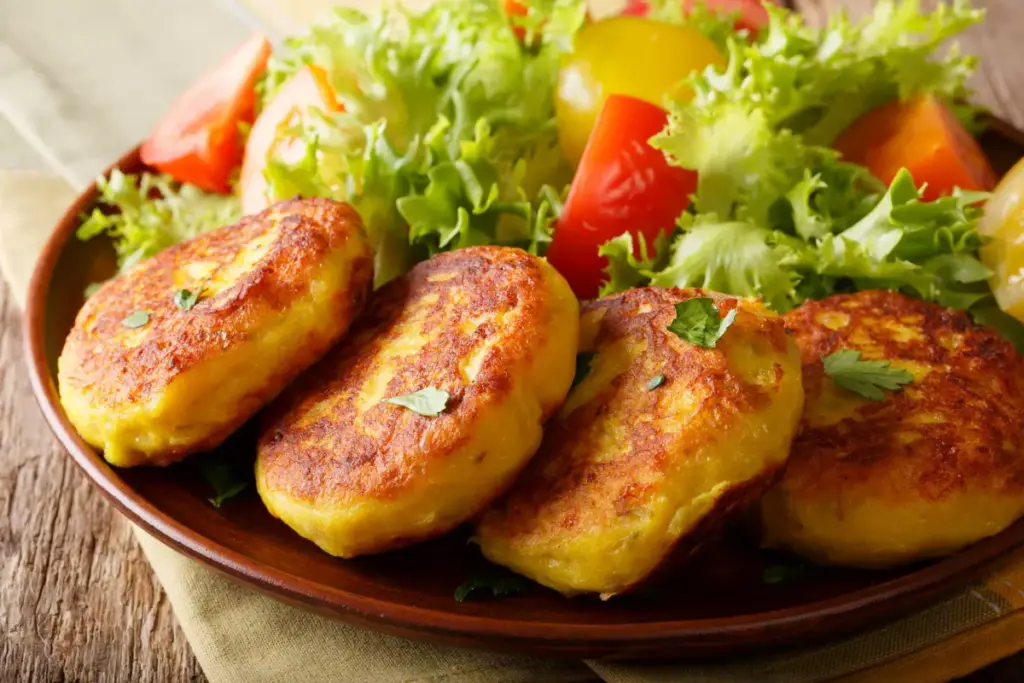
Background and History of Llapingachos
Llapingachos are a traditional Ecuadorian dish of potato patties or thick potato pancakes stuffed with cheese and cooked on a hot griddle until crispy. They are usually served with salsa de maní, a peanut sauce. The potato patties or thick pancakes are stuffed with cheese and cooked on a hot griddle until crispy brown.
Llapingachos originated in the Andean region of Ecuador, where potatoes are a staple crop and cheese is a common dairy product. The soup is seasoned with achiote, a spice derived from the seeds of the anchiote tree, which gives it a distinctive yellow color and a nutty flavor.
Llapingachos are a hearty and comforting dish that is usually served with avocado, cilantro, and hot sauce as toppings.
Ecuador Cuisine – Llapingachos
To make llapingachos, you will need the following ingredients:
- 5 to 6 Yukon Gold potatoes, or russet potatoes, peeled and chopped into small and large pieces
- 2 tablespoons of oil
- 1 onion, finely chopped
- 1 package of Sazón Goya with achiote, or 1 teaspoon cumin and 1/2 teaspoon achiote powder
- 1 cup of grated or crumbled cheese (quesillo, queso fresco, mozzarella, or Monterey jack)
- Salt and pepper to taste
- 1/4 to 1/2 cup of all-purpose flour
- For serving salsa de mani, peanut sauce
Ecuador Cuisine – Llapingachos
The steps to make the llapingachos are as follows:
- In a large pot, boil the potatoes until they are tender, about 15 to 20 minutes. Drain and mash them until smooth.
- In a small skillet, heat the oil over medium heat and add the onion, achiote, and salt. Cook, stirring, until the onion is soft, about 10 minutes.
- Add the onion mixture to the mashed potatoes and mix well. Let the potato mixture cool slightly and then shape it into balls, about the size of a golf ball.
- Flatten each ball into a patty and place a tablespoon of cheese in the center. Fold the edges over the cheese and seal them well. Reshape the patty into a smooth disc and coat it lightly with flour. Repeat with the remaining potato mixture and cheese.
- Heat a large griddle or skillet over medium-high heat and cook the patties for about 5 minutes on each side, or until golden and crispy. Serve hot with salsa de mani, avocado, cilantro, and hot sauce. Enjoy!
Ecuador Cuisine – Empanada
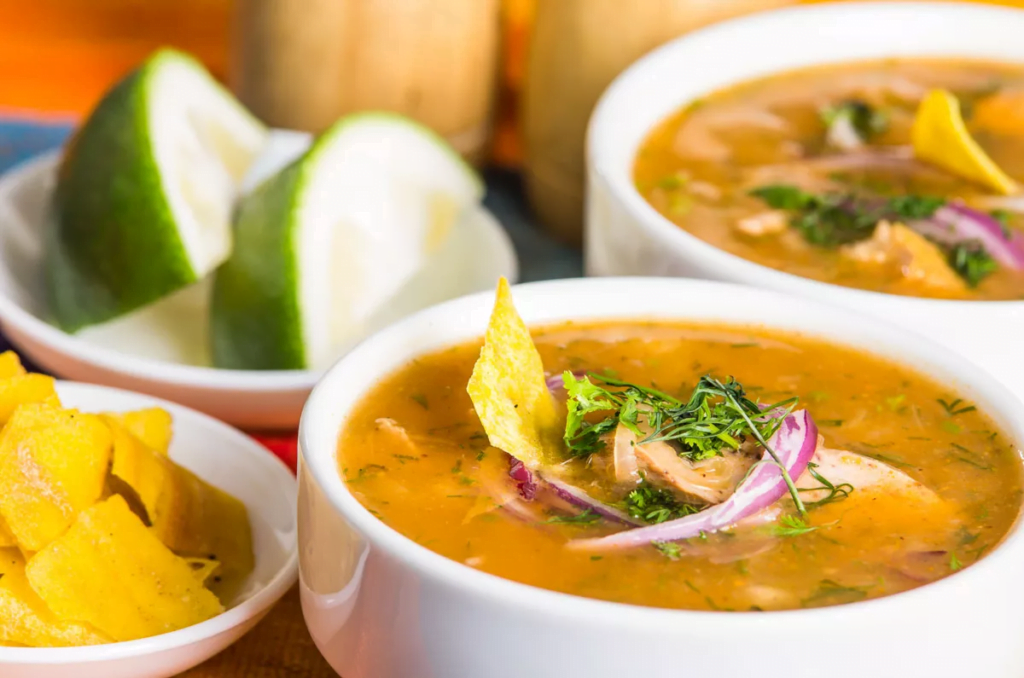
Ecuador Cuisine – Empanada
Empanadas are a type of stuffed pastry that are popular in many Latin American countries, including Ecuador. The word empanada comes from the Spanish verb empanar, which means to wrap or coat in bread.
Empanadas are believed to have originated in Galicia, Spain, where they were made with large pies filled with meat or fish and cut into slices. The Spanish colonizers and immigrants brought the empanada recipe to the Americas, where it adapted to the local ingredients and preferences.
In Ecuador, empanadas are usually made with wheat flour dough and can be baked or fried. The fillings vary depending on the region and the occasion, but some of the most common ones are cheese, meat, chicken, and corn. Empanadas are often served as a snack, appetizer, or breakfast, and are usually accompanied by aji, a spicy sauce made with chili peppers, onion, cilantro, and lime juice.
Ecuador Cuisine – Empanada Ingredients
To make Ecuadorian cheese empanadas, you will need the following ingredients:
The dough
- 3 cups of all-purpose flour
- 1/4 teaspoon of salt
- 1/4 cup of unsalted butter, cold and cut into small pieces
- 1 egg
- 3/4 cup of water
For the filling
- 2 cups of grated or crumbled cheese (queso fresco, mozzarella, or Monterey jack)
- 1/4 teaspoon of salt
- 1/4 teaspoon of black pepper
- 1/4 teaspoon of cumin
- 2 tablespoons of chopped cilantro or parsley
Frying
- Vegetable oil
For serving.
- Aji sauce
Ecuador Cuisine – Empanada Recipe
The steps to make the cheese empanadas are as follows:
- To make the dough, combine the flour and salt in a large bowl. Add the butter and rub it with your fingers until the mixture resembles coarse crumbs. Make a well in the center and add the egg and water. Mix with a fork until a shaggy dough forms. Turn the dough onto a lightly floured surface and knead until smooth and elastic, about 10 minutes. Wrap the dough in plastic wrap and refrigerate for at least 30 minutes.
- To make the filling, combine the cheese, salt, pepper, cumin, and cilantro or parsley in a small bowl. Mix well and set aside.
- To shape the empanadas, divide the dough into 12 equal pieces and roll each piece into a ball. On a lightly floured surface, roll out each ball into a thin circle, about 5 inches in diameter. Place about 2 tablespoons of the cheese filling in the center of each circle and fold the dough over to form a half-moon. Press the edges firmly to seal and crimp them with a fork or your fingers. Repeat with the remaining dough and filling.
- To fry the empanadas, heat about 2 inches of oil in a large skillet over medium-high heat. Fry the empanadas in batches, turning once, until golden and crisp, about 3 minutes per side. Drain on paper towels and serve hot with aji sauce. Enjoy!
Ecuador Cuisine – Seco de chivo
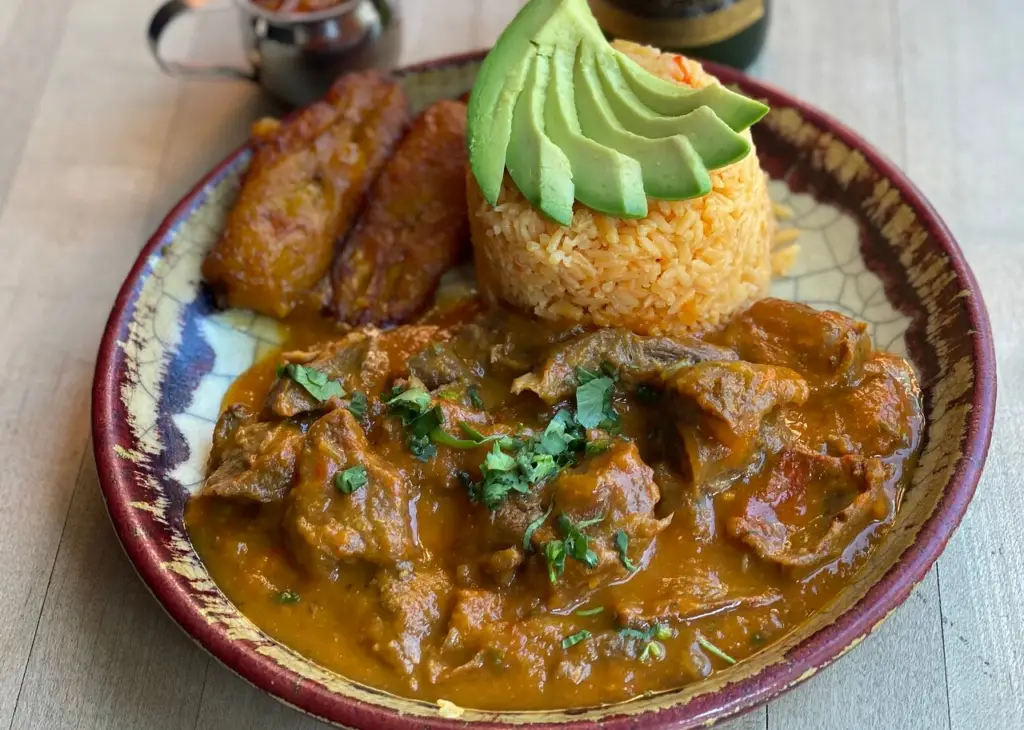
Background and History of Seco de chivo
Seco de chivo is a traditional Ecuadorian dish of goat stew that is cooked in a sauce of garlic, cumin, achiote, oregano, peppers, onions, cilantro, tomatoes, chicha or fermented corn drink, naranjilla or lulo juice, panela and spices. It is usually served with rice, avocado and sweet fried plantains.
The history of seco de chivo is not very clear, but some sources suggest that it originated in the northern part of Ecuador, in the province of Santa Elena, where goat meat was abundant and chicha was a common beverage.
According to a popular legend, the name of seco comes from the English word “second”, which the Ecuadorians heard from the British oil workers who used to work in the area in the early 20th century. However, this is a myth, since records of this dish have been found since 1820, almost a century before the British presence in the region.
Another possible explanation is that the name of seco refers to the dryness of the stew, which is achieved by evaporating the water during the cooking process.
Ecuador Cuisine – Seco de chivo Ingredients
To make seco de chivo, you will need the following ingredients:
- 2 lb goat meat, bone-in, chopped
- 6 cloves garlic, crushed
- 1 teaspoon ground cumin
- 1 teaspoon oregano
- 2 cups chicha
- 3 tablespoons canola oil
- 2 teaspoons ground achiote
- 1 red onion, finely chopped
- 1 bell pepper, finely chopped
- 3 tomatoes, peeled and seeded
- 2 hot peppers, finely chopped
- 1/2 bunch cilantro, chopped
- 1/4 cup naranjilla or lulo juice
- 1/4 cup panela or brown sugar
- Salt and pepper to taste
Ecuador Cuisine – Seco de chivo Recipe
The steps to make seco de chivo are as follows:
- In a large bowl, marinate the goat meat with the garlic, cumin, oregano, and chicha for at least 4 hours or overnight in the refrigerator.
- In a large pot, heat the oil over medium-high heat and add the achiote. Fry the goat meat in batches until browned on all sides, about 10 minutes per batch. Transfer the meat to a plate and set aside.
- In the same pot, add the onion, bell pepper, tomatoes, hot peppers, and cilantro. Cook, stirring, until the onion is soft, about 15 minutes.
- Add the naranjilla or lulo juice, panela, salt, pepper, and the remaining chicha from the marinade. Bring to a boil and then reduce the heat and simmer until the sauce is slightly thickened, about 20 minutes.
- Return the goat meat to the pot and cover with the sauce. Simmer until the meat is tender and falling off the bones, about 2 hours. You can add more water if the sauce becomes too dry.
- Serve hot with rice, avocado, and sweet fried plantains. Enjoy!
Ecuador Cuisine – Cuy (Guinea pig)

Background and History of Cuy (Guinea pig)
Cuy is a traditional Ecuadorian dish that consists of roasted or fried guinea pig. It is a delicacy that dates back to the pre-Columbian times, when the indigenous people of the Andes domesticated the animal for its meat.
Cuy is considered a symbol of the Andean culture and identity, and it is usually served on special occasions, such as religious festivals, weddings, and birthdays. Cuy is also a source of protein and nutrients, and it is said to have medicinal properties.
Ecuador Cuisine – Cuy Ingredients
To prepare cuy, you will need the following ingredients:
- One whole guinea pig, cleaned and gutted
- Salt
- Pepper
- Achiote paste
- Garlic
- Cumin
- Oregano
- Chiles
Ecuador Cuisine – Cuy Recipe
The steps to make cuy are as follows:
- Rub the guinea pig with salt, pepper, achiote paste, garlic, cumin, oregano, and chiles. You can also marinate it with lemon juice, beer, or chicha (a fermented corn drink) for more flavor. Let it rest for at least two hours or overnight in the refrigerator.
- Preheat the oven to 375°F (190°C) or heat a large skillet with oil over medium-high heat. If using the oven, place the guinea pig on a baking sheet and roast for about an hour, turning once, until golden and crisp. If using the skillet, fry the guinea pig on both sides for about 15 minutes, or until golden and crisp. You can also spit-roast the guinea pig over a fire, turning it frequently, for about an hour.
- Cut the guinea pig into four pieces and serve with potatoes, corn, salad, and aji (a spicy sauce made with chili peppers, onion, cilantro, and lime juice). Enjoy your cuy!
Ecuador Cuisine – Helado de Paila

Ecuador Cuisine – Helado de Paila – Background and History
Helado de Paila is a traditional Ecuadorian ice cream that is made with fruit juice, ice, sugar, and sometimes fruits. It is a sorbet-like dessert that is churned by hand in a large bronze or copper pot (paila) that is placed on ice.
The name means “pan ice cream” in Spanish, and it originated in Ibarra, a city in the northern part of Ecuador.
The history of Helado de Paila dates back to 1896. A teenager named Rosalía Suárez had the idea of placing a copper wok on a basin of ice, snow, and straw, and mixing fruit juice until it froze.
She used the snow from the glacier on top of the Imbabura volcano, and her descendants still run an ice cream shop in Ibarra. Helado de Paila became popular throughout Ecuador and beyond, and it is still mostly artisanal and hand churned.
Ecuador Cuisine – Helado de Paila Ingredients
To make Helado de Paila, you will need the following ingredients:
- 4 cups of fruit juice of your choice (such as blackberry, mango, pineapple, passion fruit, or tamarind)
- 1/4 cup of sugar (or more to taste)
- 2 cups of ice
- Optional: fresh fruits, chopped or pureed
Ecuador Cuisine – Helado de Paila Recipe
The steps to make Helado de Paila are as follows:
- In a small saucepan, heat the fruit juice and sugar over medium heat, stirring until the sugar dissolves. Bring to a boil and then remove from heat. Let it cool slightly.
- In a large bowl, place the ice and cover it with a cloth or a towel. Place the paila (or a large metal bowl) on top of the ice and secure it with a rope or a string.
- Pour the fruit juice mixture into the paila and start stirring with a wooden spoon. Keep stirring and scraping the sides of the paila as the juice freezes and thickens. This may take 15 to 20 minutes, depending on the temperature and the size of the paila.
- If you are using fresh fruits, you can add them halfway through the stirring process, or you can blend them with the juice before pouring it into the paila.
- Once the Helado de Paila is ready, you can serve it immediately or transfer it to a freezer-safe container and freeze until firm. Enjoy your homemade Ecuadorian ice cream!
There are many more Ecuadorian culinary delights to discover, and we encourage you to explore the local cuisine wherever you go. From street food to high-end restaurants, there is something for every food enthusiast in Ecuador.
Conclusion
Our journey through the flavors of Ecuadorian cuisine has come to an end, but we hope that we have inspired you to explore the rich and diverse food culture of this beautiful country. We have taken you on a journey through traditional Ecuadorian dishes and shared authentic Ecuadorian recipes that you can try at home.
We have also introduced you to some of the unique specialties and must-try culinary delights of Ecuador, as well as the diverse range of fruits that add a burst of flavor to its cuisine.
Ecuadorian food culture is a significant part of the country’s identity, and we encourage you to embrace it fully. Whether you are a food enthusiast or simply looking to try something new, we hope that you will savor the best of Ecuadorian food and immerse yourself in its vibrant culinary culture.
So why not plan a trip to Ecuador or attempt to recreate some of its signature dishes at home? The flavors of Ecuador await you!
FAQ’s
What is Ecuadorian cuisine?
Ecuadorian cuisine refers to the traditional dishes and food culture of Ecuador. It is known for its diverse flavors, use of fresh ingredients, and unique specialties.
What is the National dish of Ecuador?
The National dish of Ecuador includes dishes like ceviche, llapingachos, and seco de chivo. Ceviche is a popular seafood dish made with marinated raw fish, while llapingachos are potato patties typically served with avocado and chorizo. Seco de chivo, on the other hand, is a hearty goat stew with rice and avocados.
What are some popular Ecuadorian dishes?
Some popular Ecuadorian dishes include ceviche, locro de papas, seco de pollo, and encebollado. These dishes showcase the rich flavors and ingredients that are representative of Ecuadorian cuisine.
Can I find authentic Ecuadorian recipes?
Yes! In our section on unveiling authentic Ecuadorian recipes, we share step-by-step instructions for making traditional Ecuadorian dishes like ceviche, locro de papas, and helado de paila.
What are some Ecuadorian cuisine specialties?
Ecuadorian cuisine has various specialties that highlight the country’s culinary traditions. Some examples include cuy (guinea pig), llapingachos (potato patties), and hornado (roast pork).
How does Ecuadorian food culture influence the cuisine?
Ecuadorian food culture is deeply rooted in the customs and traditions of the country. From traditional food rituals to the use of native ingredients, Ecuadorian food culture plays a significant role in shaping the flavors and preparations of Ecuadorian dishes.
What are some of the best Ecuadorian culinary delights?
Ecuador offers a wide range of culinary delights. Some of the top dishes to try include Ecuadorian empanadas, encebollado, seco de carne, and fanesca (a traditional Easter soup).
Are there any unique fruits found in Ecuador?
Yes! Ecuador is home to a variety of exotic fruits. Some examples include maracuyá (passion fruit), naranjilla, and chirimoya (custard apple). These fruits add a delightful burst of flavor to Ecuadorian dishes.
What is the Best Food in Ecuador?
Looking for the best food in Ecuador? Look no further. From traditional dishes like ceviche and llapingachos to unique delicacies such as cuy (guinea pig), Ecuador offers a diverse culinary experience. Don’t miss out on trying the delicious seafood along the coast or exploring the highlands for hearty Andean cuisine.
What is Ecuador’s National Dish?
Ecuador’s national dish is called “ceviche,” a flavorful seafood dish. It consists of fresh fish or seafood marinated in lime or lemon juice, mixed with onions, tomatoes, cilantro, and other ingredients.
Ceviche is typically served cold and is a popular and refreshing choice in Ecuadorian cuisine.

